Studio Monitors Guide
Frequency response
This refers to the range of frequencies that the speakers are capable of reproducing accurately. A wider frequency response ensures that you will be able to hear all parts of your mix, especially those at the lower and higher ends of the spectrum. For example, the Yamaha HS5 studio monitors offer a frequency response of 54Hz - 30kHz, making them excellent for detailed audio playback. Similarly, the KRK Rokit 5 G4 monitors provide a frequency response of 43Hz - 40kHz, allowing for accurate reproduction of low-frequency sounds.
When looking at the market, studio monitors can be divided into different segments based on their frequency response. In the entry-level segment, the Presonus Eris E3.5-3.5 inch monitors provide a frequency response of 80Hz - 20kHz, ideal for beginners on a tighter budget. Moving up to the mid-range segment, the Adam Audio T7V monitors boast a frequency response of 39Hz - 25kHz, ensuring more clarity and depth in your mixes. For professionals who require the highest level of accuracy, the Neumann KH 310 monitors deliver an astonishing frequency response of 34Hz - 21kHz, offering a rich and detailed sound representation across the entire audio spectrum. Keeping the frequency response in mind will help you choose the best and right studio monitors to achieve precise and balanced audio monitoring.

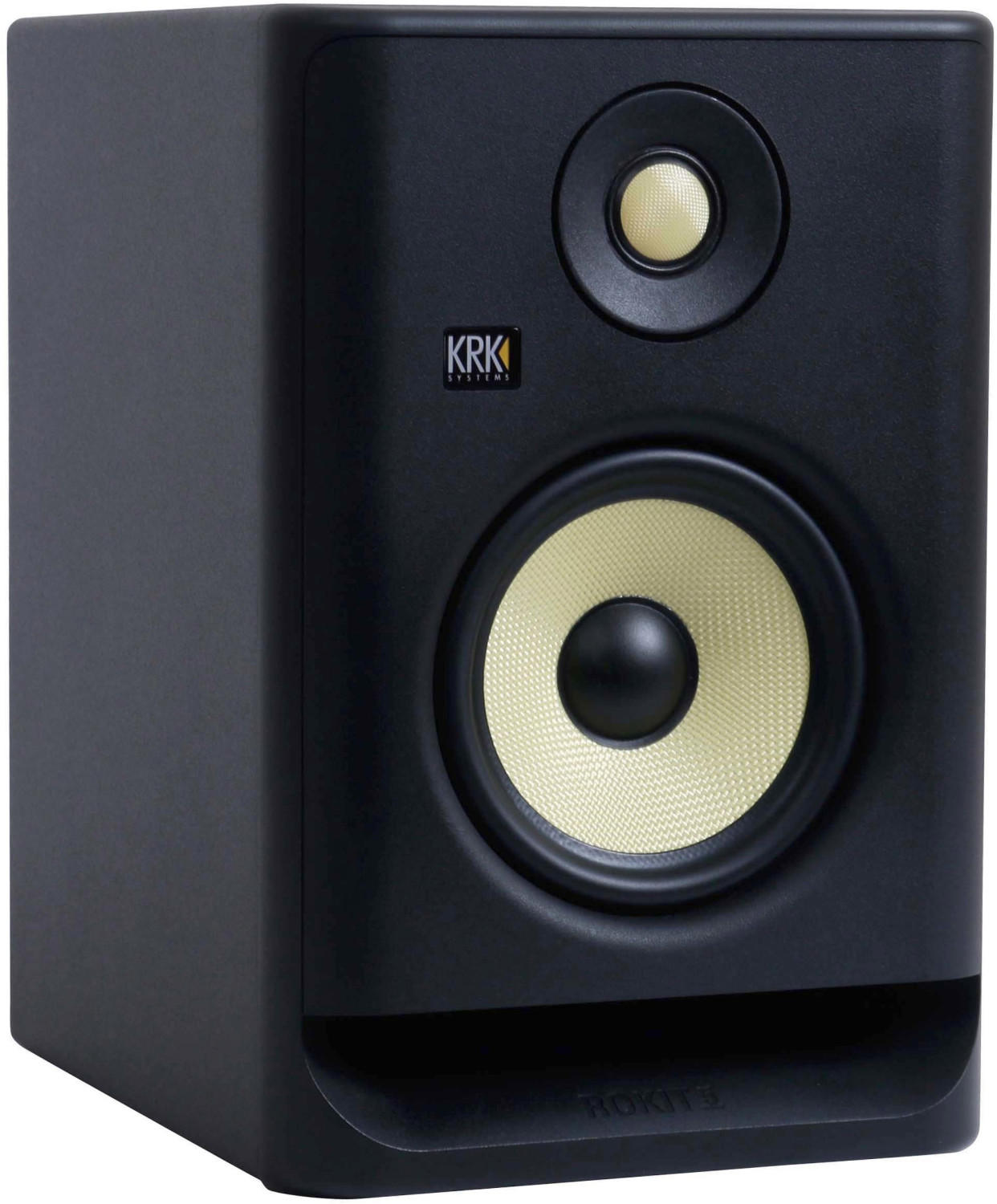
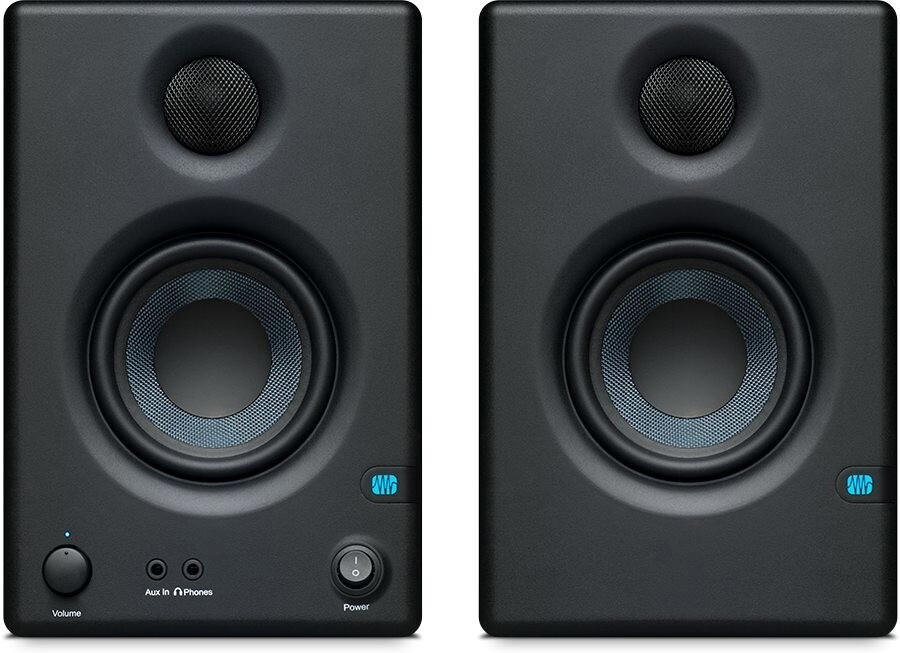
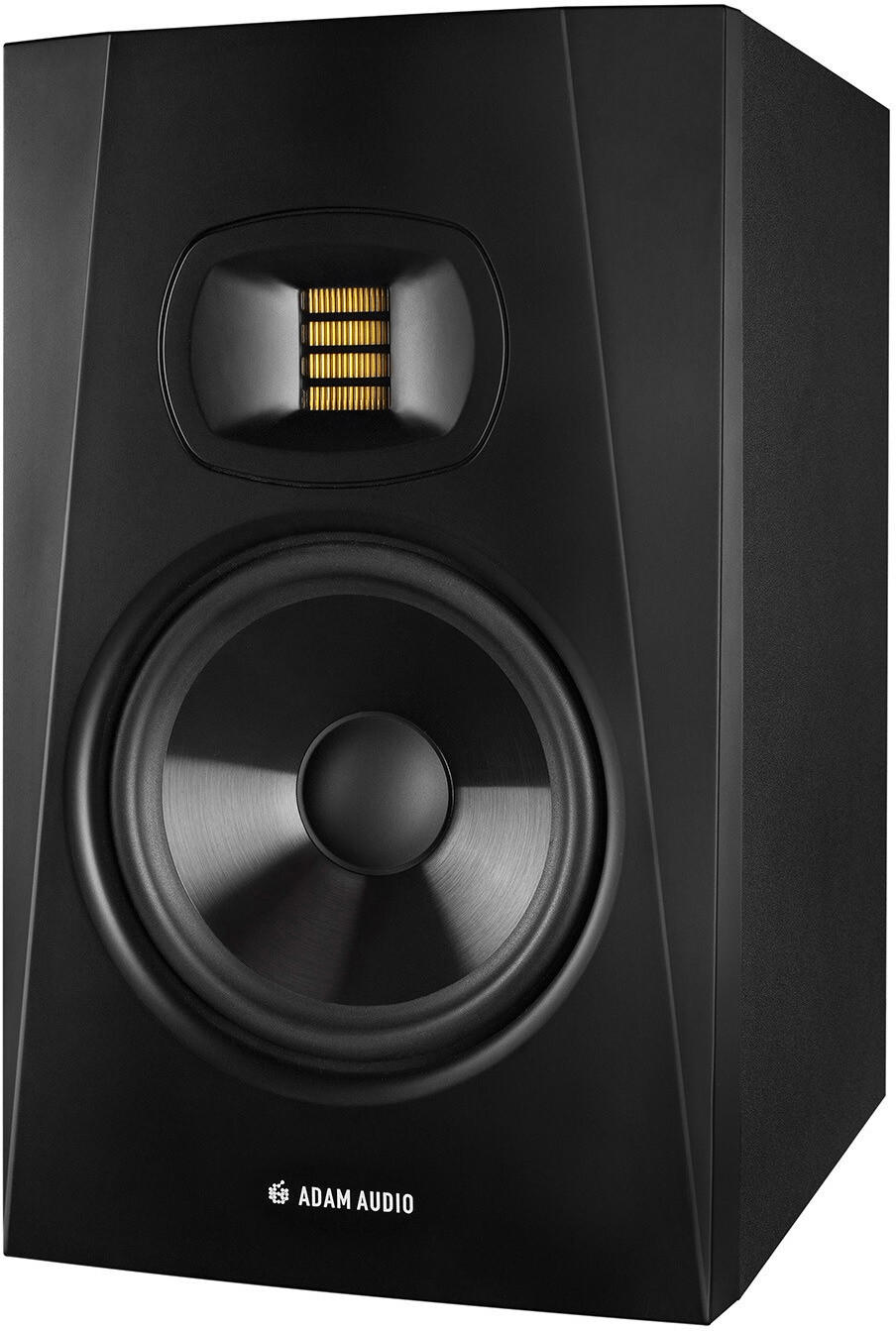
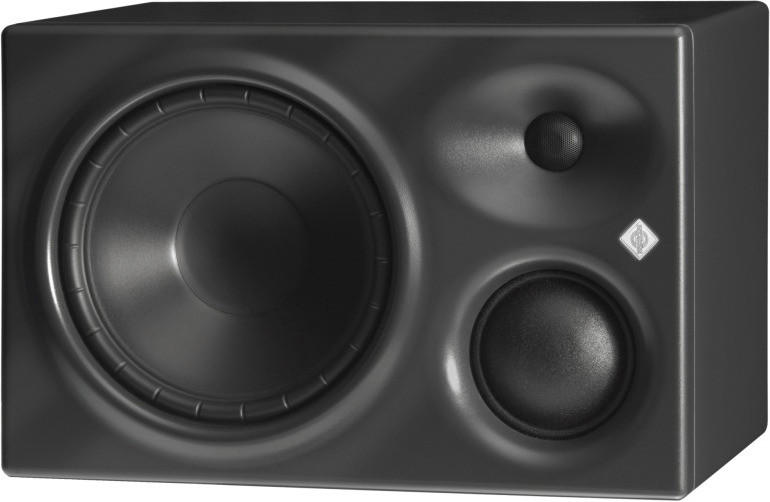
Impedance
Impedance is the measure of opposition to the flow of electrical current, and it is typically measured in ohms. Different audio systems may have different impedance ranges, so it is crucial to select studio monitors that match the impedance of the audio equipment you will be using. Failure to match impedance can result in loss of signal or degraded audio quality.
There are various studio monitors on the market that cater to different impedance ranges. For instance, the KRK Rokit 5 G4 is a popular choice with an impedance of 5.12 ohms, making it suitable for audio systems with similar impedance requirements. Another option is the Yamaha HS7, which features an impedance of 6 ohms, providing compatibility for audio systems with a slightly higher impedance range. It is important to check the specifications and match the impedance of your audio equipment with the studio monitors you choose for optimal performance. Other noteworthy studio monitor brands to consider include JBL, Mackie, and Genelec, who offer a variety of products across different impedance ranges.

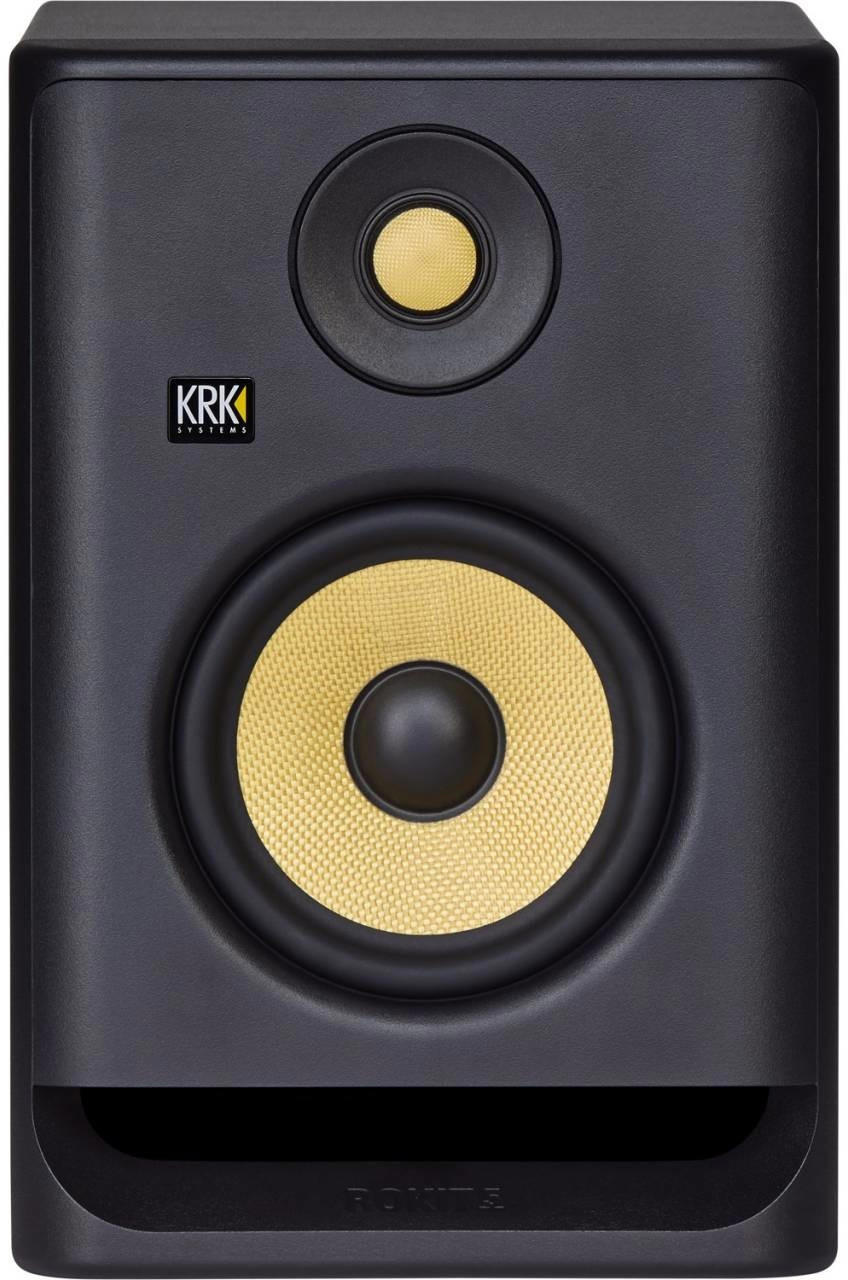

Sensitivity
Sensitivity refers to how efficiently the speakers convert the electrical power into sound. A high sensitivity rating means that the speakers require less power to produce the same sound level compared to speakers with a lower sensitivity rating.
For professional studios where accuracy is crucial, studio monitors with a high sensitivity are desirable. One example of such monitors is the KRK Rokit 5 G4. With a sensitivity rating of 104 dB, these speakers efficiently reproduce sound without requiring excessive power.



However, for home studios or casual listening, lower sensitivity monitors may be suitable. The Yamaha HS5, with a sensitivity rating of 103 dB, is an excellent choice for users looking for balanced sound accuracy and a wider frequency response. Both models offer exceptional sound quality and are widely recognized in the industry.

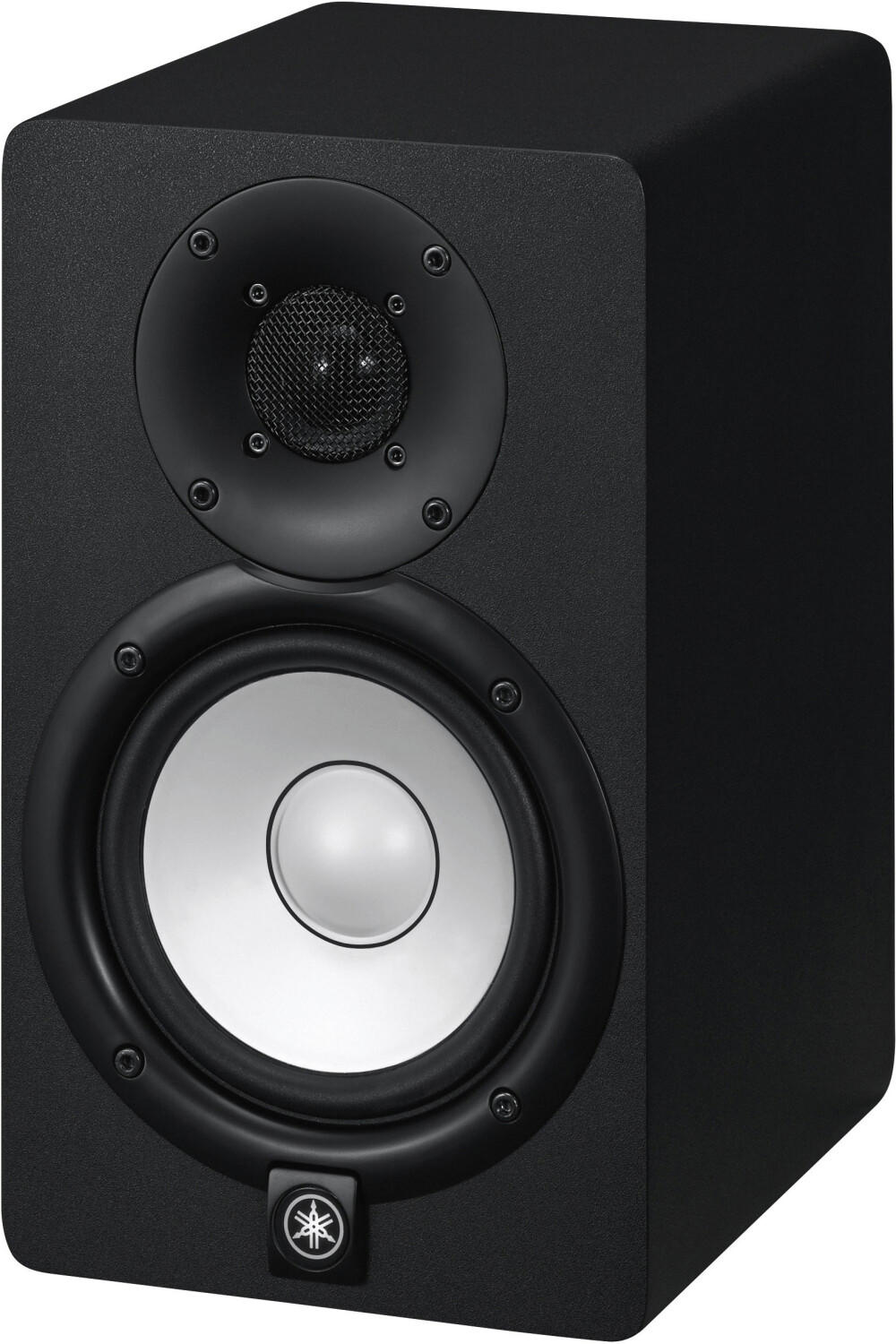
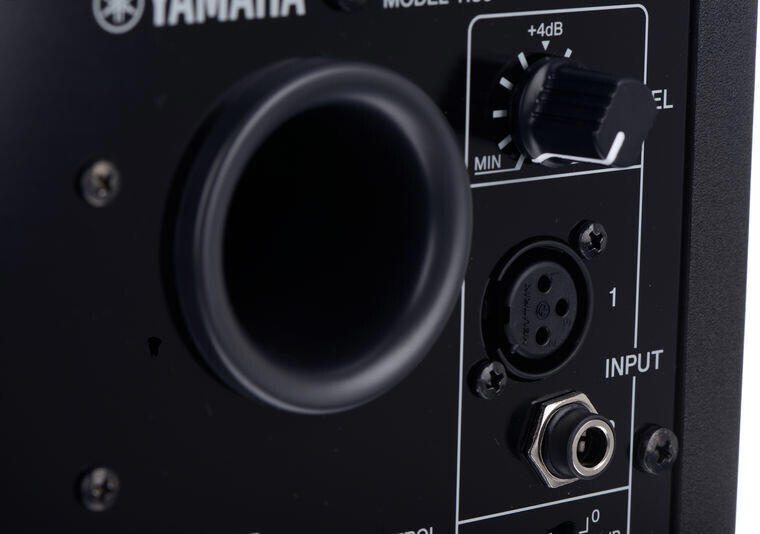
Power output
The power output of studio monitors is typically measured in watts, with higher wattage generally indicating greater loudness and clarity. For professionals or those requiring high volume levels, studio monitors with higher power output are recommended. Some studio monitors with impressive power output include the KRK Rokit 8 G4 (203 watts), Yamaha HS8 (120 watts), and Adam Audio A8X (200 watts). These monitors deliver robust and clear sound reproduction, ensuring accurate audio monitoring in different studio environments.
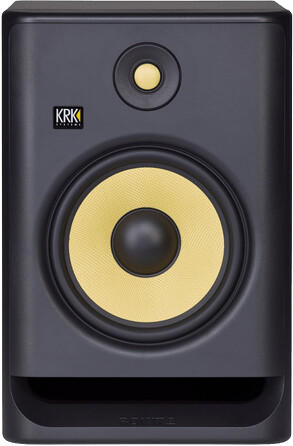
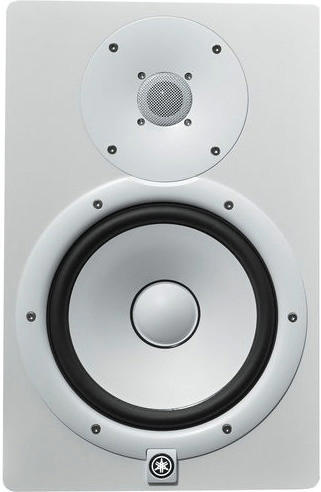
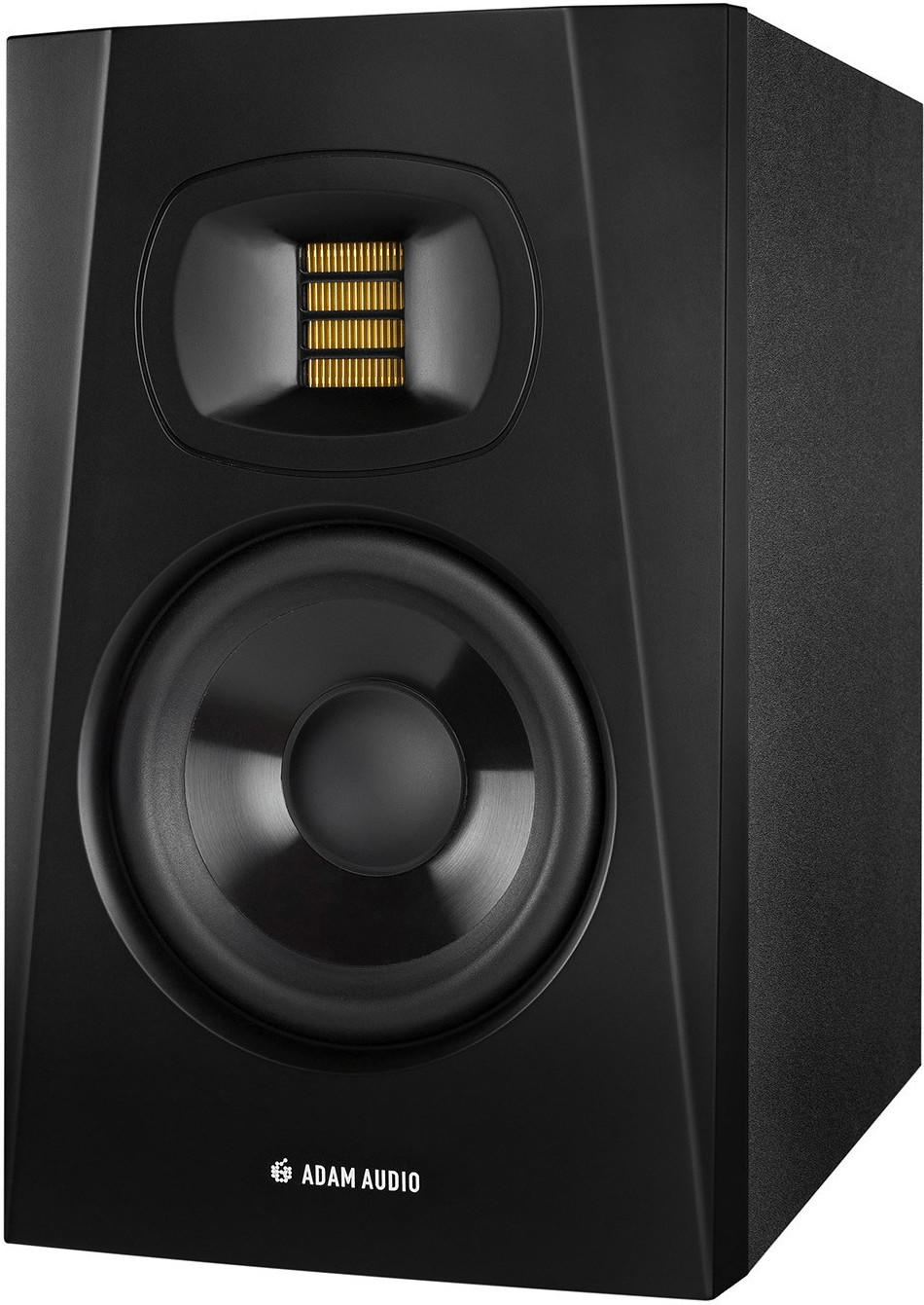
Speaker size
The size of a speaker refers to the diameter of the low-frequency driver, typically measured in inches. Generally, larger speaker sizes offer more low-frequency extension and can provide a greater overall response. However, it is essential to strike a balance between size and room dimensions to avoid overpowering bass or lack of accuracy.
For smaller studio setups or individual home studios, compact studio monitors with a 5-inch driver, such as the Yamaha HS5 or KRK Rokit 5, can be a suitable choice. These speakers provide a balanced sound with clear highs and defined lows while staying compact and budget-friendly.
In mid-sized studios, monitors with a 7 or 8-inch driver, like the Adam Audio T7V or JBL 308P MKII, can offer the ideal compromise between room-filling sound and precision. These monitors provide extended low-frequency response and enhanced volume levels without sacrificing accuracy.
In larger studios or professional studio environments, monitors with even larger driver sizes, such as the Focal Shape 65 or Dynaudio LYD 8, with sizes of 6.5 inches and 8 inches respectively, offer greater power and extended low-end response. These monitors excel in handling demanding audio mixes and reproducing intricate details, making them suitable for critical listening environments.


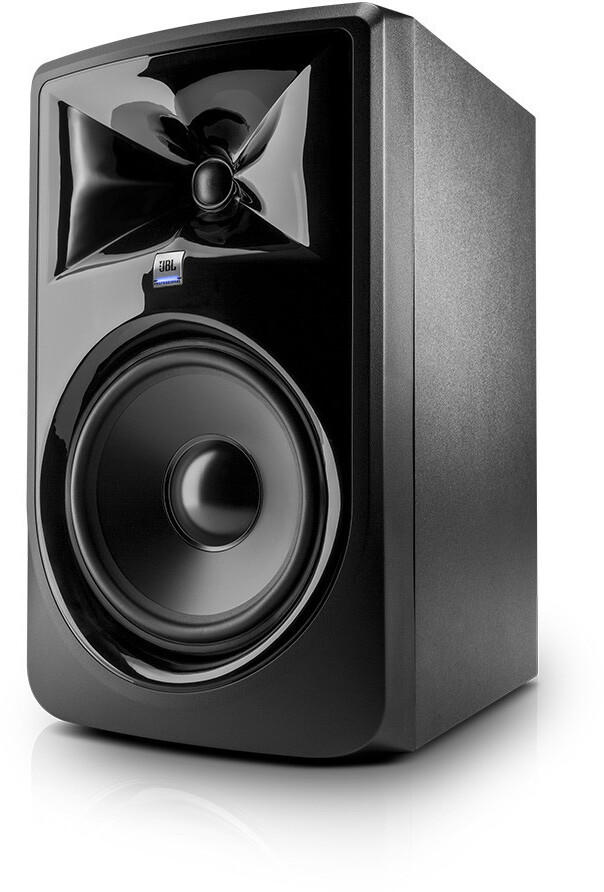
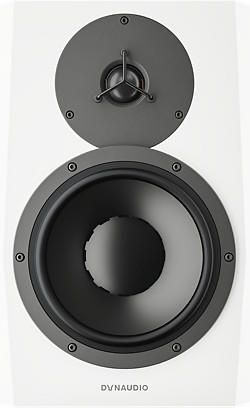
Ultimately, the size of the speaker will depend on the size of your studio space and the level of accuracy and power required for your monitoring needs.
Speaker type (active/passive)
Active speakers, also known as powered monitors, have built-in amplifiers and efficient frequency response to provide better control over sound quality. One example of a popular active studio monitor is the KRK RP7 G3. It features a bi-amped design with a total power output of 145W, ensuring clear and accurate sound reproduction. Another option is the Yamaha HS7, known for its balanced and flat sound performance thanks to its advanced transducers and bi-amplification system. On the other hand, passive speakers require an external amplifier to power them. These speakers are often preferred by those who already own separate amplifiers. One notable example of a passive studio monitor is the JBL 308P MkII, which offers a powerful and accurate audio experience with its low-frequency ports and compact design. Overall, the choice between active and passive speakers boils down to personal preference and the existing setup or budget constraints.

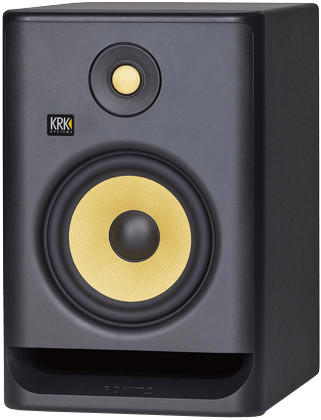
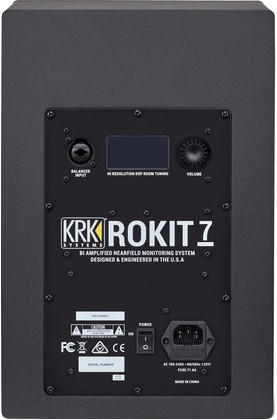
Cabinet construction
It is important to opt for monitors with well-built cabinets that minimize resonance and vibration. One example of studio monitors with exceptional cabinet construction is the KRK Rokit RP5 G4. These monitors feature optimally-shaped cabinets made of high-density material, which significantly reduces unwanted resonance and ensures accurate sound reproduction. Another excellent choice is the Yamaha HS5, renowned for its precision-tuned enclosures that eliminate unwanted Cabinet resonance, resulting in clear and accurate audio playback. Additionally, the Adam Audio A7X studio monitors are known for their sturdy front-panel design, minimizing unwanted vibrations and guaranteeing precise sound reproduction. When considering cabinet construction, it is advisable to look for monitors with advanced technology and robust build quality to ensure superior audio performance.




Port design
A port design refers to the configuration and shape of the opening or hole in the speaker cabinet that allows air to flow in and out. The design of the port greatly influences the speaker's response, especially when it comes to low-frequency reproduction. There are various port designs available, each catering to different approaches and focusing on different aspects of sound reproduction.
Some popular types of port designs include front-firing, rear-firing, and side-firing ports. Front-firing ports are located on the front panel of the monitor and are ideal for near-field listening scenarios, allowing the listener to place the monitors closer to the walls without affecting the sound. Examples of studio monitors with front-firing ports include the KRK Rokit 5 G3 and the Yamaha HS5. Rear-firing ports, on the other hand, are positioned on the back of the cabinet and are suitable for placements near walls or corners. These monitors, while taking up less space, might require more careful positioning to avoid sound reflections. An example of a studio monitor with a rear-firing port is the JBL 305P MkII.


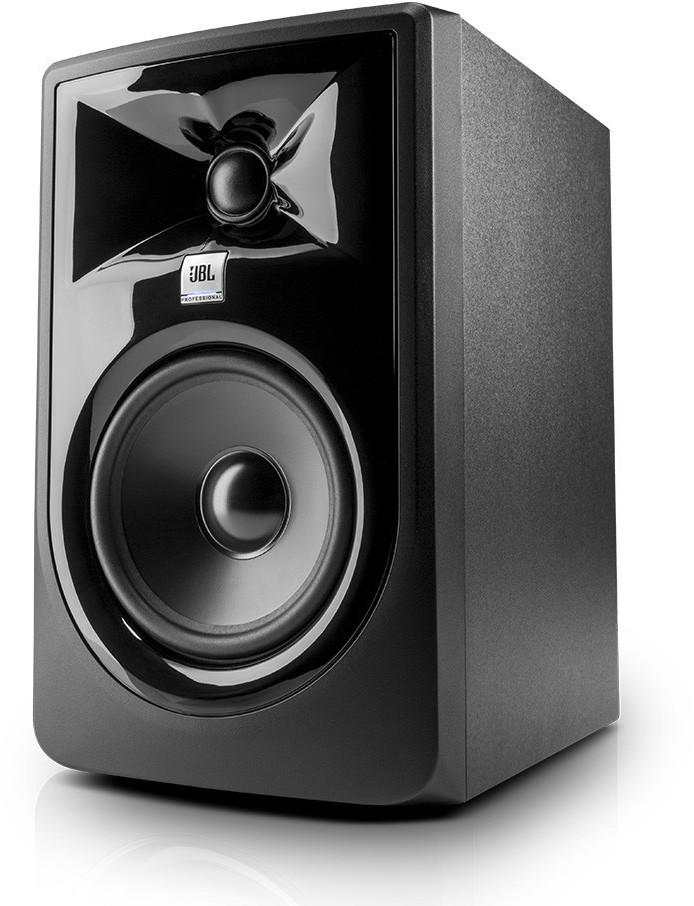
Side-firing ports, such as the ones found on the Presonus Eris 3.5 and the M-Audio BX5 D3, direct the low-frequency sound to the sides for a broader dispersion, making them suitable for larger rooms or when a wider listening position is desired. By understanding the different port designs and their corresponding benefits, you can choose a studio monitor that perfectly suits your specific recording or mixing needs.

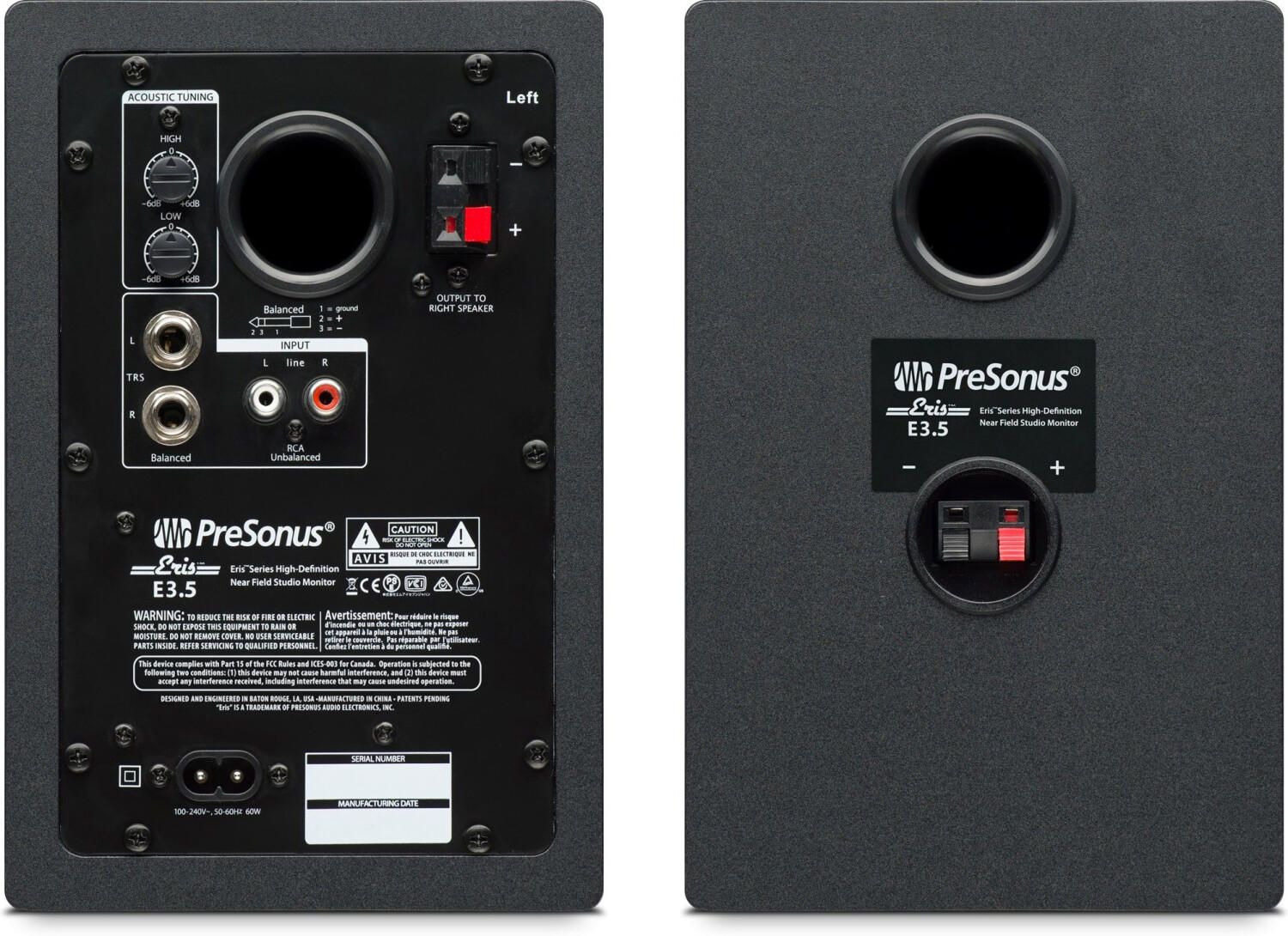
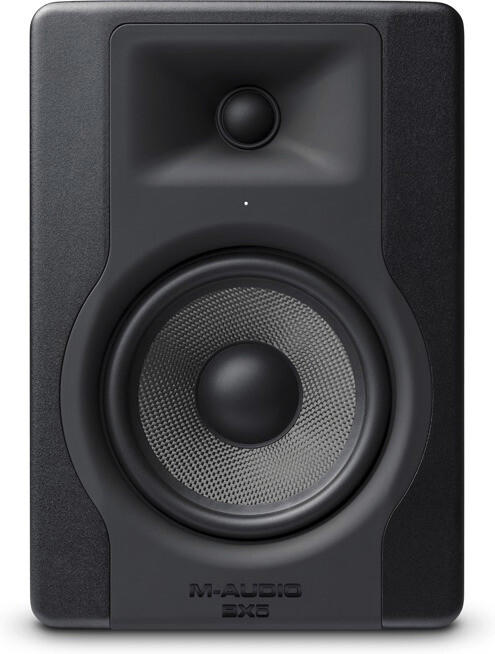
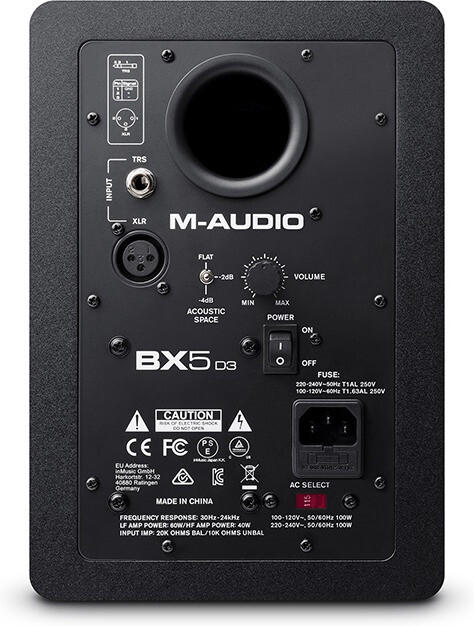
Tweeter type
The tweeter is responsible for producing the high-frequency sounds, making it crucial for ensuring accurate and detailed audio reproduction. There are several types of tweeters available in the market, including dome tweeters and ribbon tweeters.
Dome tweeters, such as the JBL LSR305P MkII 5-inch Powered Studio Monitor, are widely used in studio monitors because of their ability to accurately reproduce high-frequency sounds. These monitors feature a 1-inch soft dome tweeter that delivers crisp and clear highs with minimal distortion. Another popular choice is the Yamaha HS8 Studio Monitor, which utilizes a 1-inch dome tweeter with a waveguide for controlled directivity, ensuring the best and most accurate sound dispersion.
On the other hand, ribbon tweeters, such as the Adam Audio A7X Powered Studio Monitor, are known for their exceptional transient response and wide dispersion. These monitors use a folded ribbon tweeter, which offers incredibly detailed and natural high-frequency reproduction. If you're looking for an even higher-end option, the Neumann KH 310 A Active Studio Monitor utilizes a one-piece fabric dome tweeter with a metal grille for optimum performance and extended high-frequency response.


These examples highlight the importance of considering the tweeter type when selecting studio monitors, as it greatly affects the accuracy and fidelity of the high-frequency sound reproduction.
Woofer type
The woofer is responsible for reproducing the low-frequency sounds accurately, giving you a balanced and powerful sound.
There are different types of woofers available on the market, each with its own characteristics. One popular choice is the powered woofer, which has a built-in amplifier. This eliminates the need for an external amplifier and helps deliver more accurate sound. Products that feature powered woofers include the KRK Rokit RP5 G4 and Yamaha HS8.
Another type to consider is the passive woofer, which requires an external amplifier to power it. Passive woofers tend to be larger and heavier, providing deep and powerful bass response. Examples of studio monitors that have passive woofers include the Adam Audio A7X and JBL 305P MKII.



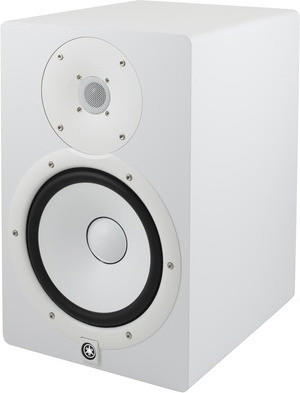
Regardless of the type of woofer you choose, it is important to consider the wattage and impedance ratings to ensure compatibility with your audio setup.
Connectivity options
These options determine how the monitors will interface with your audio source, such as your sound interface or computer. Most studio monitors provide analog inputs, such as XLR or TRS, which are widely used in professional audio environments. A great option in this regard is the Yamaha HS8, which offers XLR and TRS input options, ensuring compatibility with a wide range of audio devices. Another popular connectivity option is the inclusion of RCA inputs, which are commonly found on consumer audio equipment. Products like the JBL 305P MKII provide both XLR and TRS inputs, as well as RCA inputs, allowing you to connect to various sources seamlessly. Furthermore, some studio monitors, like the KRK Rokit RP7 G4, also offer digital inputs such as S/PDIF or AES/EBU, providing a direct digital connection to your audio interface for pristine audio quality.




Input voltage compatibility
This refers to the ability of the studio monitors to work effectively with the electrical power supply available in your country. Different countries have different voltage levels and signal standards, so it is crucial to ensure that the monitors you choose are compatible.
One example of studio monitors that offer various input voltage compatibility options is the Yamaha HS Series. These monitors come in different models, such as the HS5, HS7, and HS8, and each model offers multiple input options to accommodate different voltage levels. The HS5 model, for instance, is available with built-in 100-120V or 220-240V power supply options, while the HS7 and HS8 models offer the same options along with an additional model that operates on 100V. With these options, you can easily find the right studio monitors for your specific voltage requirements.


Amplification technology
The type of amplification technology directly affects the overall sound quality and accuracy of the monitors, as well as other factors such as power output and efficiency. One popular amplification technology is Class D, which offers high power output with minimal distortion and heat generation. Studio monitors such as the JBL 306P MkII and Presonus Eris E8 XT utilize Class D amplification technology, providing clear and detailed sound reproduction with low-energy consumption. Another commonly used amplification technology is Class AB, which delivers a balanced combination of power efficiency and sound accuracy. Some notable studio monitors featuring Class AB amplification technology include the KRK Rokit RP7 G4 and Yamaha HS7.
The market offers a wide range of studio monitors with different amplification technologies, each catering to specific needs and preferences. For professionals seeking high power output and superior sound reproduction, studio monitors equipped with Class D amplification technology, such as the JBL 305P MkII and Presonus Eris E5 XT, are excellent choices. On the other hand, those desiring a balanced mix of power efficiency and accuracy may opt for studio monitors utilizing Class AB amplification technology, such as the KRK Rokit RP5 G4 and Yamaha HS5. It is also worth mentioning studio monitors featuring hybrid amplification technologies, like the Adam Audio T7V, which combines Class D and Class AB amplifiers to deliver a versatile performance.






Signal-to-noise ratio
A higher SNR indicates a better audio quality with less background noise.
One example of studio monitors with an excellent signal-to-noise ratio is the Yamaha HS8. These monitors offer an SNR of 98 dB, ensuring a clear and accurate sound representation. Another great option is the KRK Rokit RP7 G4, which provides a SNR of 106 dB, delivering outstanding audio performance. Additionally, the Adam Audio T7V is worth considering, with an SNR of 98 dB, providing a high level of detail and clarity in sound reproduction.



Remember to always consider the signal-to-noise ratio as a prime factor when choosing studio monitors, as it directly impacts the quality of the audio produced.
Control options (EQ, volume, etc.)
A highly recommended product in this category is the Genelec 8050B. It features room response controls such as Bass Tilt, Bass Roll-Off, and Treble Tilt, allowing you to adjust the sound to compensate for sonic variations in your studio environment. Another excellent option is the KRK Rokit RP8 G4. It provides an onboard LCD visual EQ while offering DSP-driven Graphic EQ with 25 settings to fine-tune the response to your listening preference.
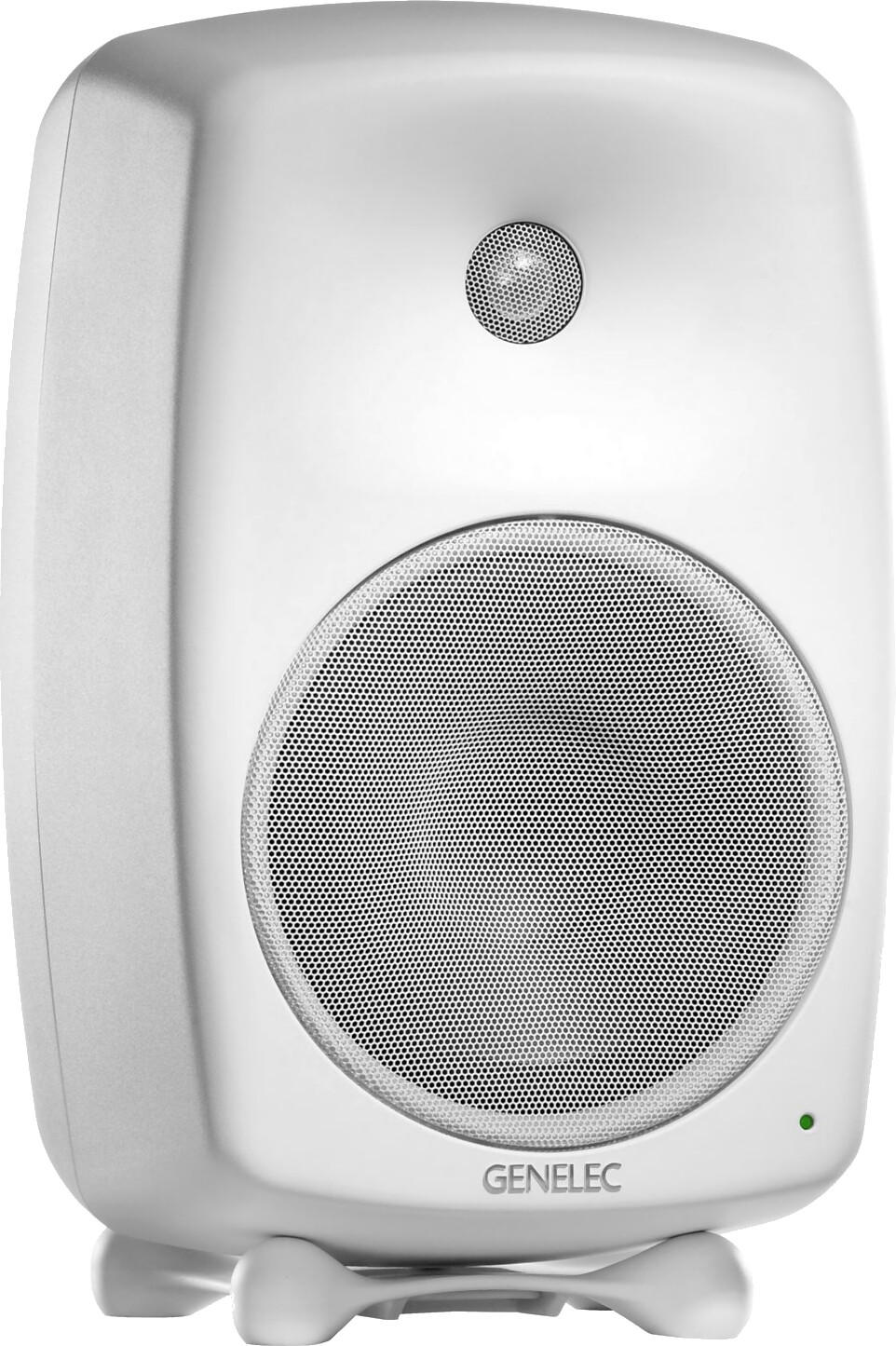

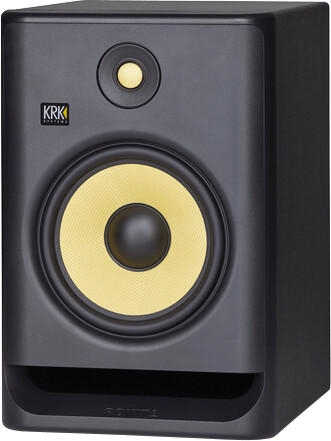
Mounting options
There are various mounting options available, such as floor-standing, desktop, wall-mounted, and stand-mounted. Floor-standing monitors, like the ADAM Audio A7X, are suitable for larger studios where space is not a concern. These monitors usually come with built-in stands or bases for stability. On the other hand, desktop monitors, like the JBL 305P MkII, are compact and designed to be placed on a desk or shelf. They often come with isolation pads or rubber feet to minimize vibrations and improve sound quality. Wall-mounted monitors, such as the KRK Rokit RP5-G4, are ideal for smaller studios or when wall space is limited. These monitors come with brackets or wall mounts for easy installation. Finally, stand-mounted monitors, like the Yamaha HS8, are suitable for those who prefer to elevate their monitors for better positioning. These monitors typically require separate monitor stands to achieve the desired height. With different mounting options available, consider your studio space and how you plan to position the monitors before making a decision.



Weight and size
These factors play a significant role in determining the portability and space requirements of the studio setup. For those who require compact and lightweight monitors, options like the KRK Rokit RP5 G4 and the JBL 305P MkII are excellent choices. The KRK Rokit RP5 G4 weighs only 10.69 lbs, making it ideal for mobile studios or setups with limited space. On the other hand, the JBL 305P MkII weighs 10.43 lbs, making it equally compact and portable. Both monitors offer exceptional sound quality and accuracy while reducing the physical footprint in the studio. However, if size or weight is not a constraint, larger options like the Yamaha HS8 or the Adam Audio A7X are popular choices among professionals in the music industry. The Yamaha HS8 weighs 23.4 lbs and boasts a larger woofer size for enhanced low-frequency reproduction, while the Adam Audio A7X weighs 20.27 lbs and features a spacious cabinet design for improved soundstage and clarity.



Driver alignment
This refers to how the drivers (woofers, tweeters, etc.) are positioned within the speaker cabinet. Two common types of driver alignment are the vertical alignment and horizontal alignment.
In vertical alignment, the drivers are stacked on top of each other in a column, resulting in a narrow dispersion pattern. This alignment is ideal for near-field monitoring setups where the listener sits close to the speakers. The KRK Rokit RP5 G4 is an excellent example of studio monitors with vertical driver alignment. With a compact design and 5-inch woofer and 1-inch tweeter, these monitors provide precise and focused sound.



On the other hand, horizontal alignment features drivers arranged side by side, providing a wider dispersion pattern. This alignment is suitable for mid-field or far-field monitoring setups where the listener is seated farther away from the speakers. The Yamaha HS8 is a popular studio monitor that highlights horizontal driver alignment. These monitors feature an 8-inch woofer and 1-inch tweeter, ensuring a balanced and accurate sound representation over a broader listening area.


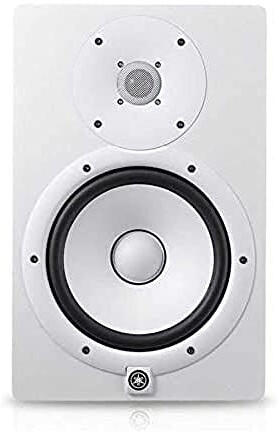
Directivity control
One popular product that offers excellent directivity control is the Genelec 8030C Studio Monitor. With its Directivity Control Waveguide, this compact monitor provides a controlled dispersion angle of 45 degrees, allowing for a focused sound image even in challenging acoustic environments. Another example is the KRK Rokit RP7 G4 Studio Monitor, which features a built-in efficient Class D power amplifier and a rotatable 1" enhanced AMT (Air Motion Transformer) tweeter that provides a controlled sweet spot. Both monitors offer a wide dispersion pattern, ensuring high-quality sound reproduction directly in front of the listener.
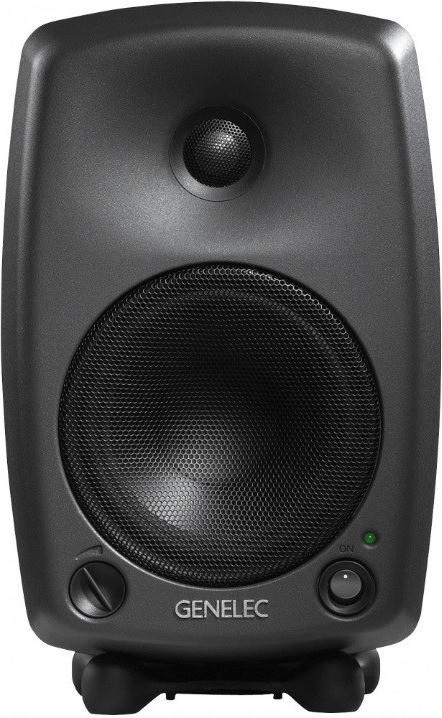
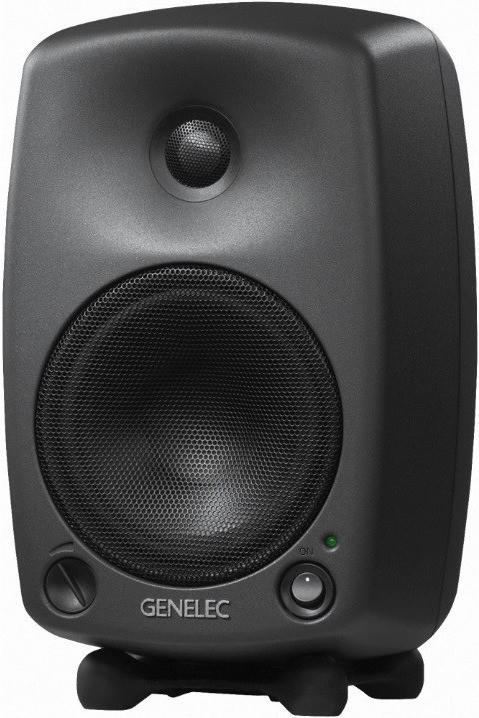


Room correction capability
Room correction refers to the ability of the monitors to adjust the audio output according to the acoustic characteristics of the room. This feature is important as it helps compensate for unwanted sound reflections, standing waves, and frequency response issues that can distort the sound accuracy.
One of the top monitors known for their excellent room correction capability is the Genelec 8341A SAM. These monitors employ Genelec's Smart Active Monitoring (SAM) technology, which includes sophisticated signal processing and advanced room calibration tools. They also feature a built-in measurement microphone and powerful DSP engine, allowing them to automatically adjust the frequency response to suit the room's acoustics. Another noteworthy option is the ADAM Audio S3H, which incorporates ADAM Audio's DSP engine called "S Series DSP," enabling precise control and equalization to adapt to various room conditions. This technology helps ensure accurate audio reproduction even in challenging studio environments.
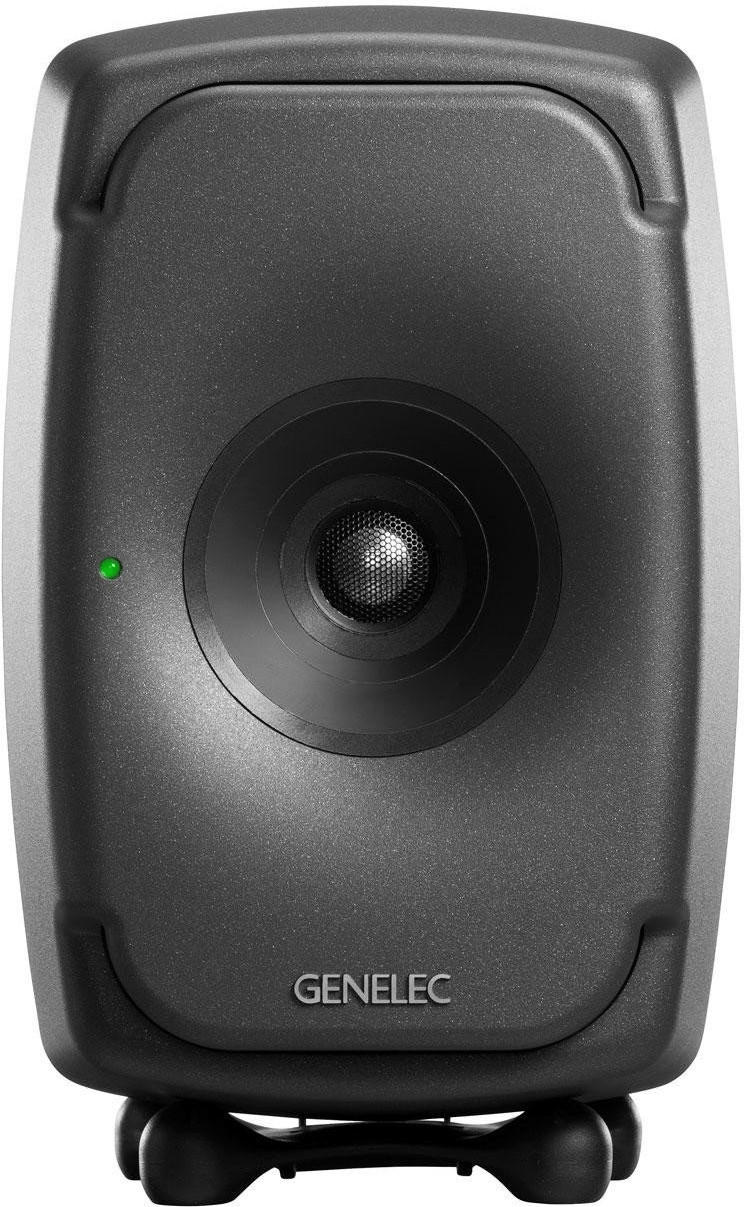
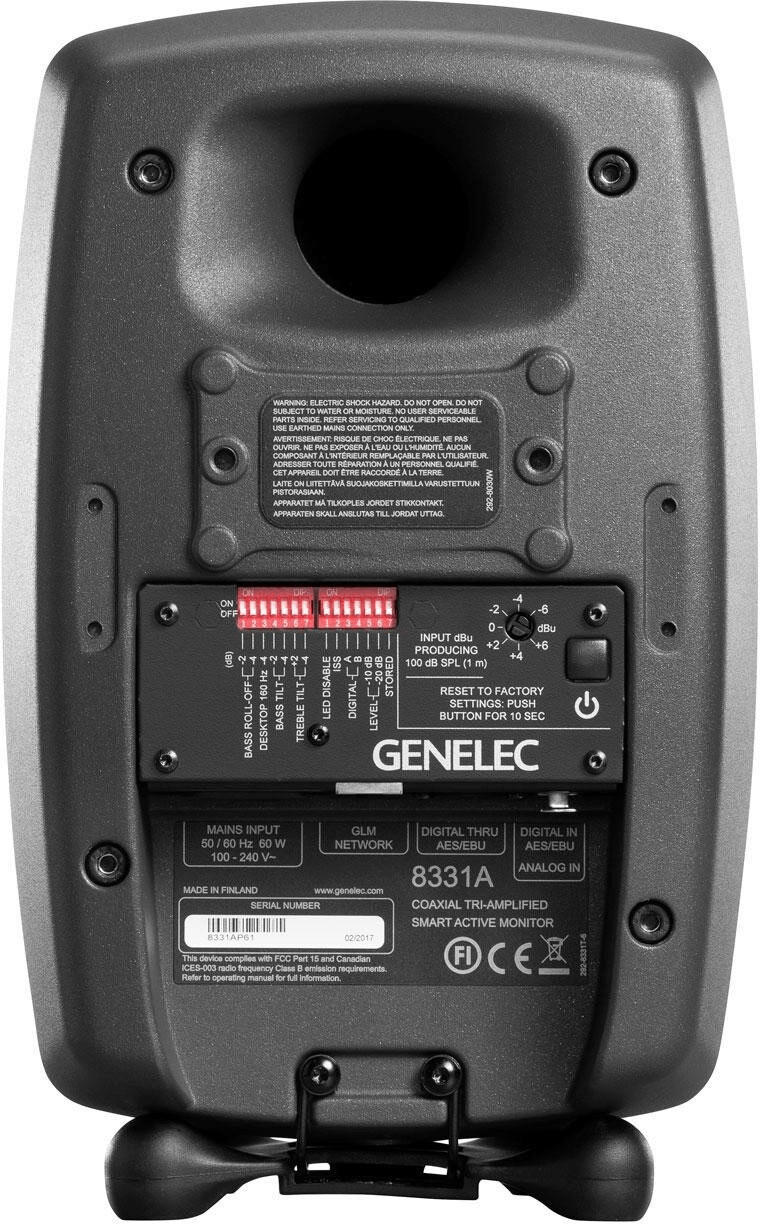
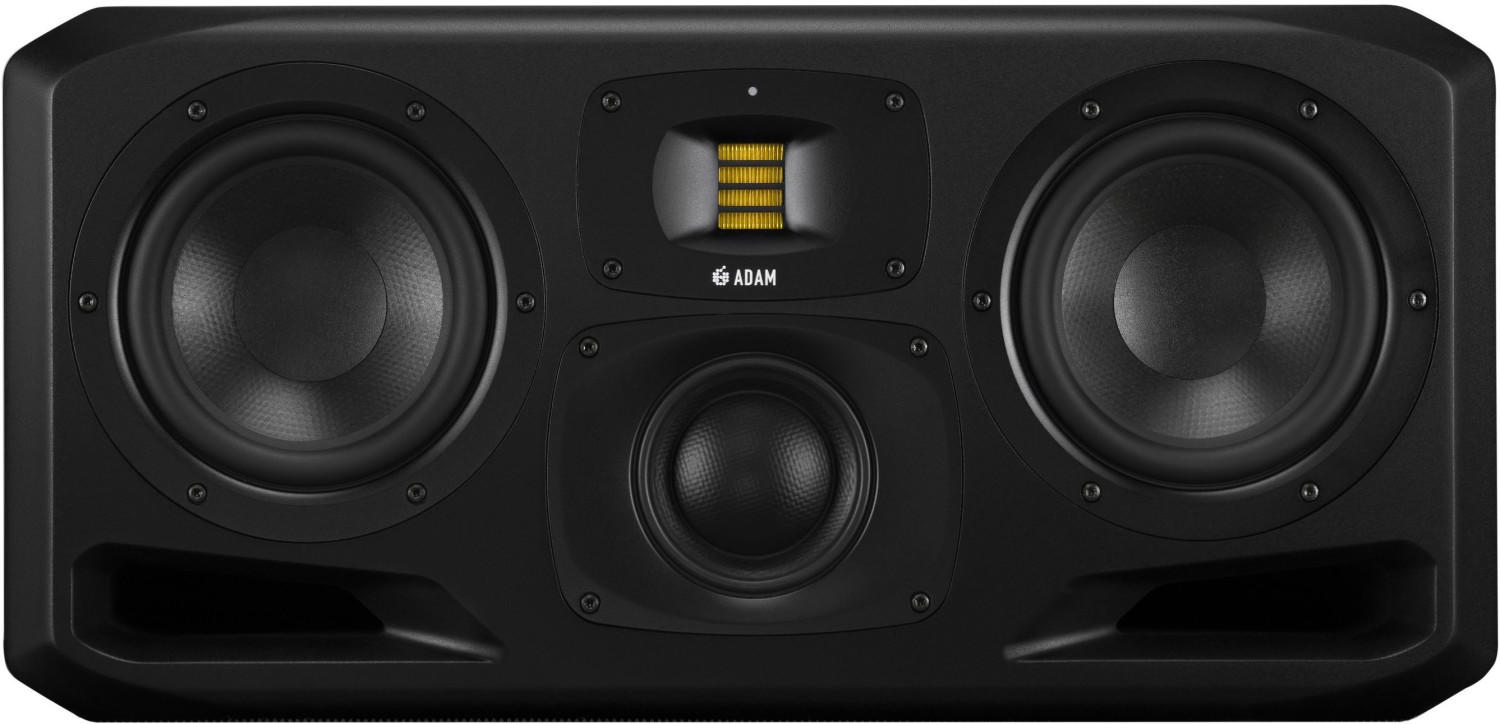
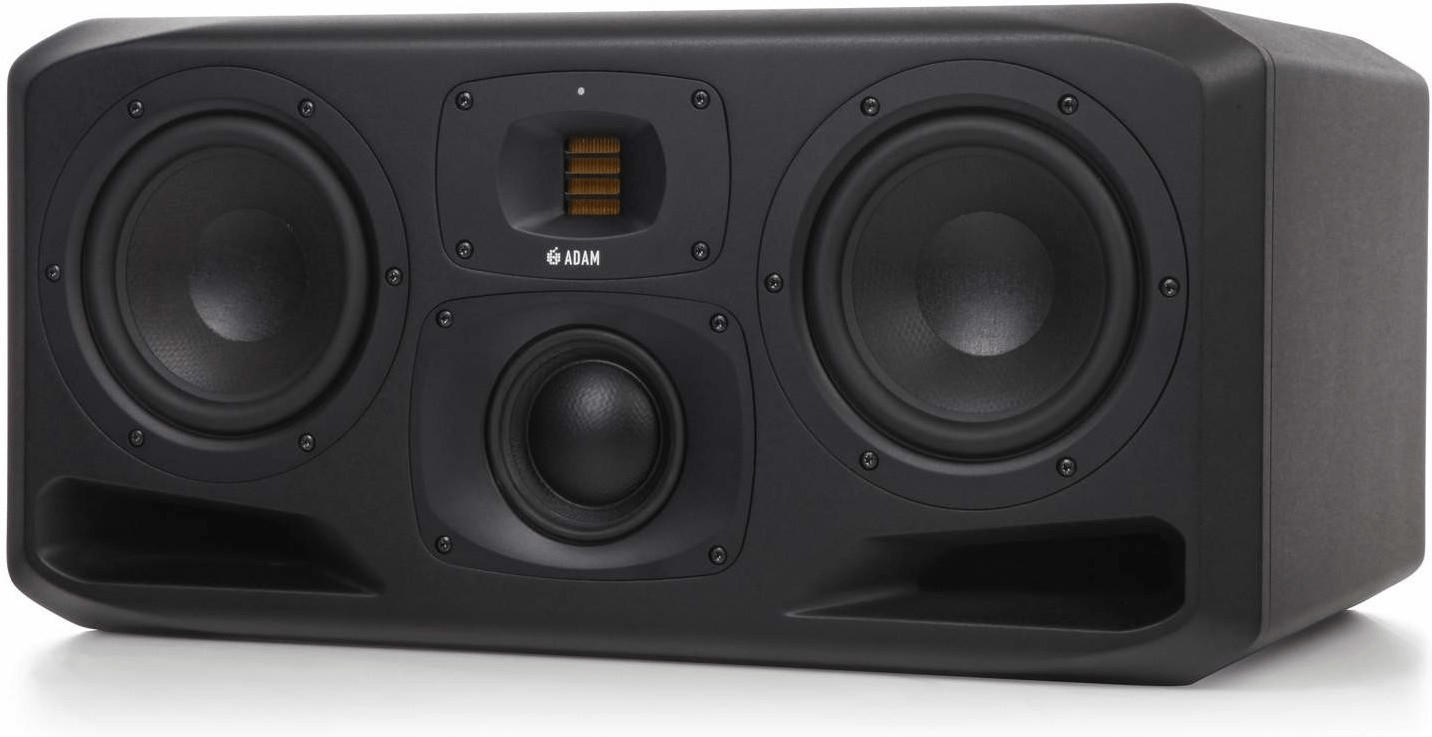
Dynamic range
This refers to the difference between the quietest and loudest sounds a speaker can produce without distortion or loss of detail. A wider dynamic range ensures that you can accurately hear subtle audio details in quiet parts, as well as the impact and clarity of louder parts.
There are multiple products available on the market that cater to different dynamic range needs. In the entry-level segment, the JBL LSR305 is known for its impressive dynamic range with a claimed 43 Hz - 24 kHz frequency response and a maximum SPL (sound pressure level) of 108 dB. Moving up to the mid-range, the Yamaha HS8 boasts a frequency range of 38 Hz - 30 kHz and a SPL capability of up to 129 dB. For those looking for high-end performance, the ADAM Audio A7X stands out, featuring an extended frequency range of 42 Hz - 50 kHz and a maximal SPL of 114 dB at 1 meter.



Distortion levels
Distortion refers to any undesirable alteration or deviation from the original sound source. Lower distortion levels result in more accurate and faithful audio reproduction, enabling you to better judge and mix your music. For example, the Yamaha HS5 studio monitor boasts a low distortion level of only 0.7%, ensuring exceptional clarity in your mixes. Another option is the Adam Audio A7X, renowned for its low total harmonic distortion (THD) of less than 0.1%. For professional-grade distortion levels, the Dynaudio Core 7 monitor offers an incredibly low THD of under 0.05%, providing pristine sound reproduction with minimal coloration. These examples demonstrate the variety of studio monitors available on the market, catering to different needs and budgets.


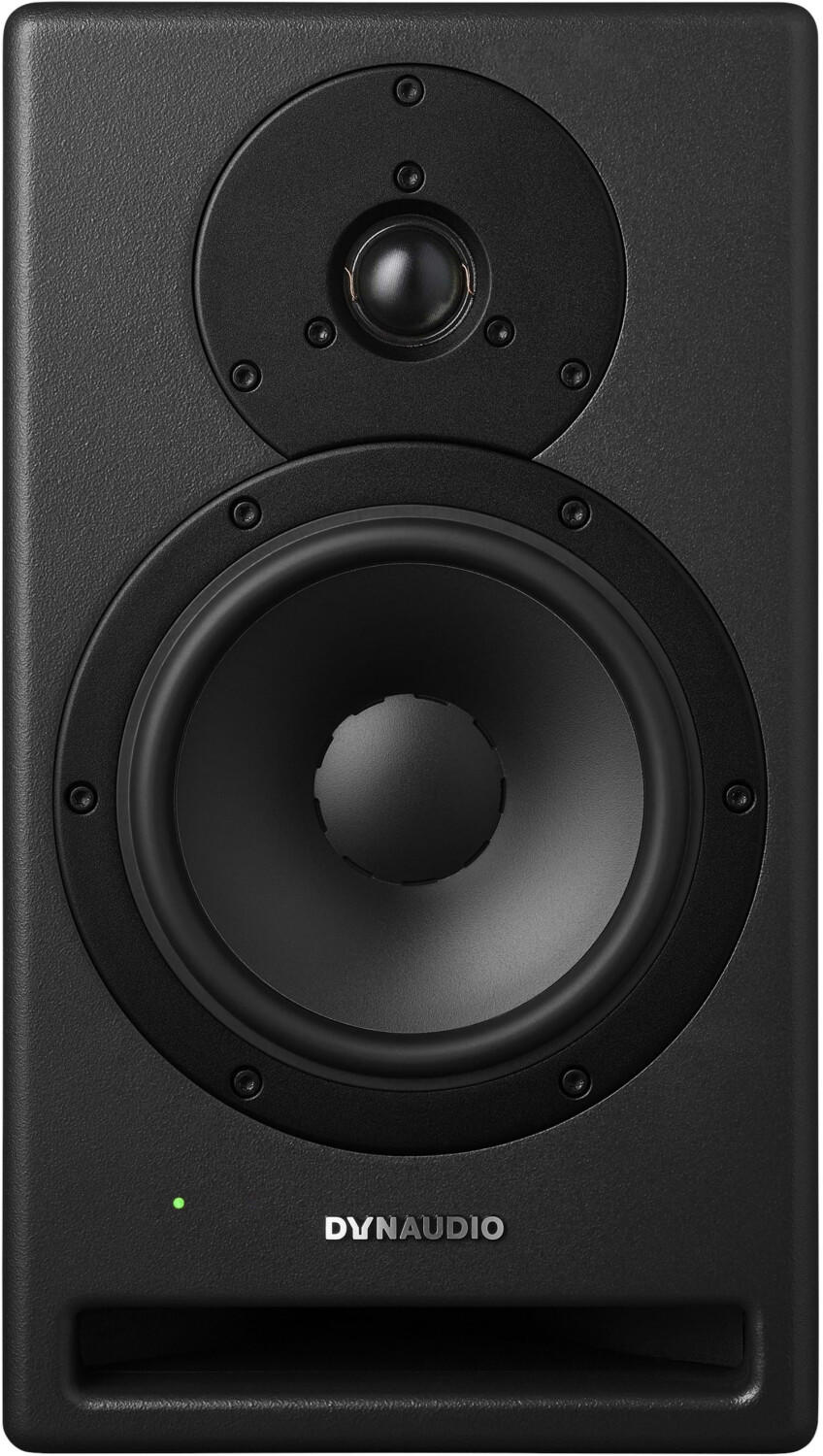
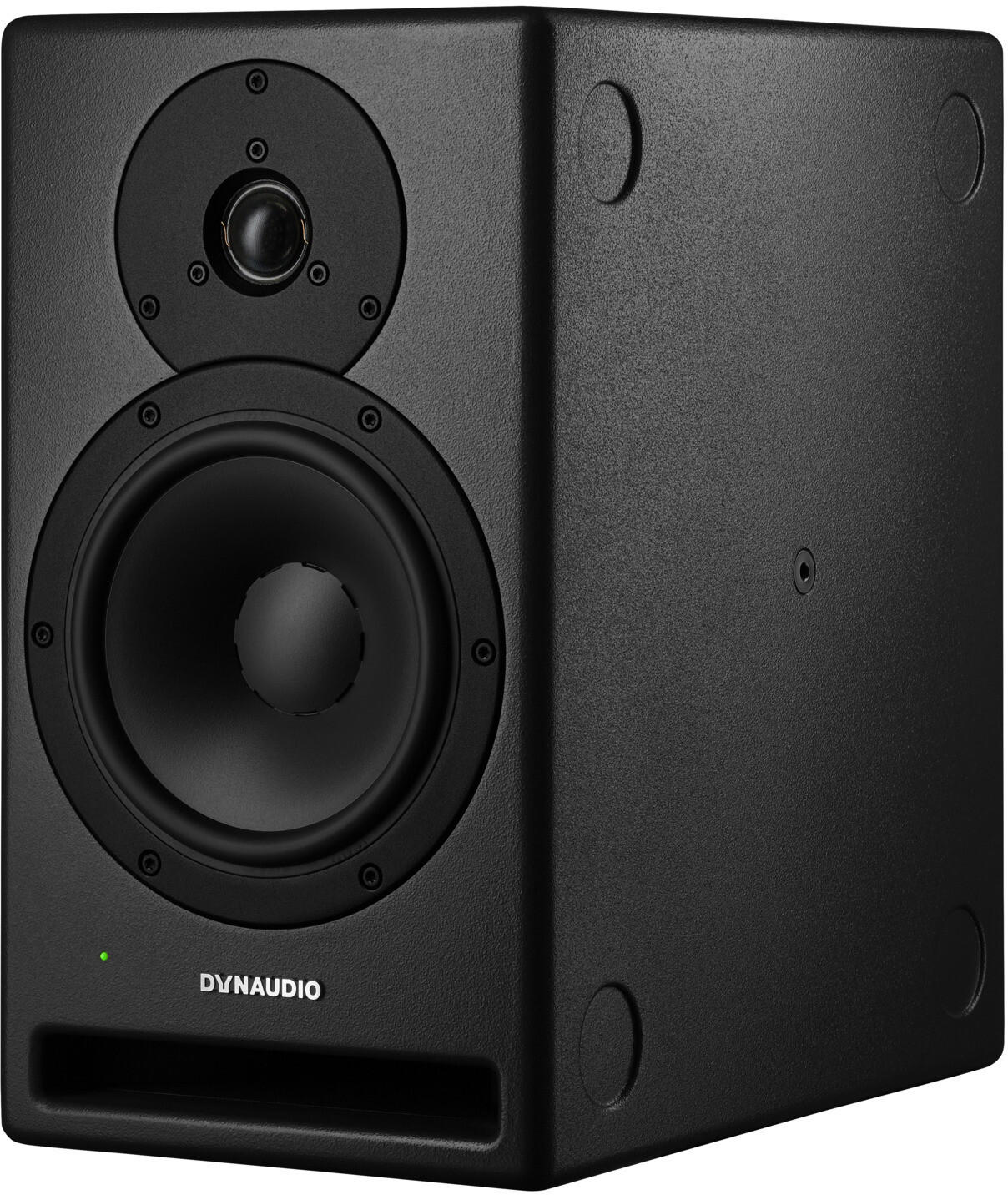
Phase response
The phase response refers to the timing relationship between different frequencies in the audio signal. A balanced and accurate phase response ensures that the different elements of the music are reproduced faithfully without any smearing or time delays.
One example of studio monitors known for their excellent phase response is the Focal Shape 65 Studio Monitor. It features an advanced passband width switch that controls the frequency response and phase integration between the low and high-frequency drivers. The result is a tight and coherent sound across the entire frequency spectrum. Another option is the Genelec 8350A SAM Studio Monitor, which utilizes the revolutionary Minimum Diffraction Coaxial (MDC) driver technology to provide outstanding phase coherence and accurate time of flight response.

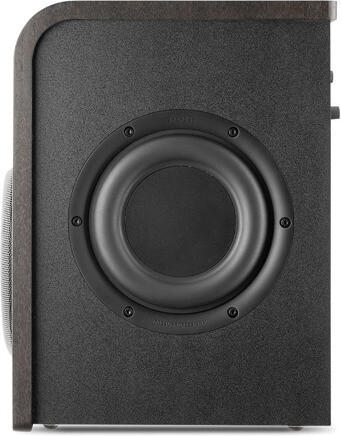
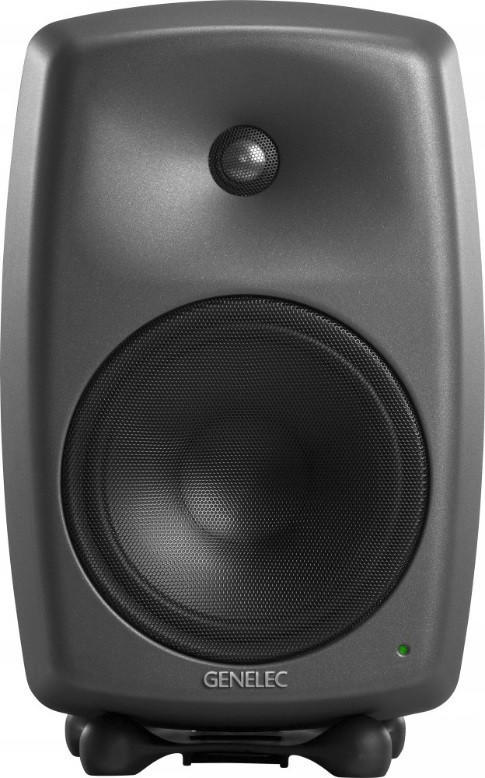
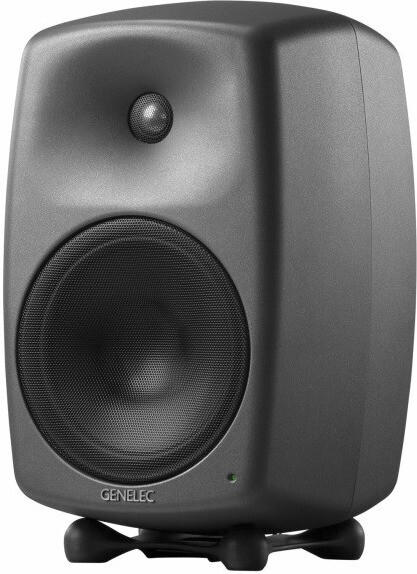
In terms of product groups, high-end studio monitors often prioritize a balanced and accurate phase response. Some reputable options in this category include the ATC SCM25A Pro Active Studio Monitors and the Neumann KH 310 Studio Monitor. Both of these monitors boast meticulous engineering and design that minimizes phase issues and delivers accurate three-dimensional soundstages. For more budget-friendly options, monitors like the JBL 305P MkII Powered Studio Monitors and the Presonus Eris E4.5 Active Studio Monitor also offer relatively good phase responses within their price range.




Crossover frequency
This refers to the point at which different frequencies are divided and sent to different drivers within the speaker. A lower crossover frequency means that more frequencies will be sent to the woofer, while a higher crossover frequency means that more frequencies will be sent to the tweeter. Good studio monitors should have a well-balanced crossover frequency that allows for accurate reproduction of both low and high frequencies. For example, the Yamaha HS8 studio monitor has a crossover frequency of 2 kHz, enabling it to accurately reproduce a wide range of frequencies. Similarly, the KRK Rokit 5 G3 studio monitor features a crossover frequency of 3.5 kHz, ensuring a balanced mix of low and high frequencies.




Dispersion angle
The dispersion angle determines how sound is spread across the listening area and can greatly impact the accuracy of audio reproduction. A wider dispersion angle can result in a more even sound distribution, making it suitable for larger rooms or if you frequently move around the workspace. On the other hand, a narrower dispersion angle provides a more focused sound, ideal for small studios where precise monitoring is critical.
Within the market of studio monitors, different brands and models offer various dispersion angles to cater to different needs. For instance, the Adam Audio A7X features a horizontal dispersion angle of 50 degrees and a vertical dispersion angle of 150 degrees, providing a well-balanced and accurate sound representation. If you require a wider dispersion angle, the KRK ROKIT 10-3 G4 delivers a horizontal dispersion angle of 110 degrees and a vertical dispersion angle of 70 degrees, ensuring even coverage across larger listening areas. In the narrow dispersion angle category, the Yamaha HS5 has a horizontal dispersion angle of 110 degrees and a vertical dispersion angle of 70 degrees, ideal for small studio spaces where precision is crucial. Remember to consider the dispersion angle of studio monitors to create the most optimized listening experience for your specific recording environment.
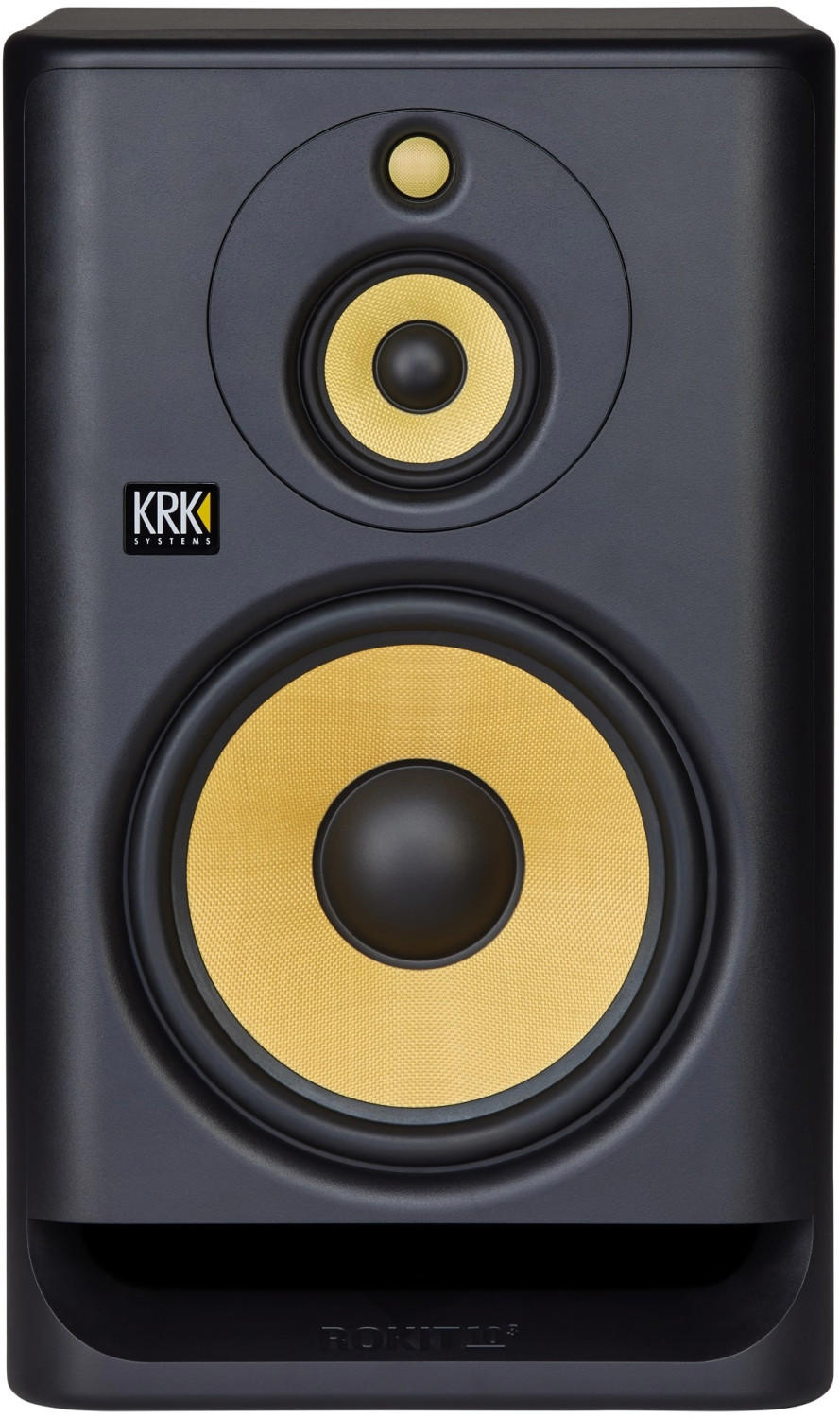
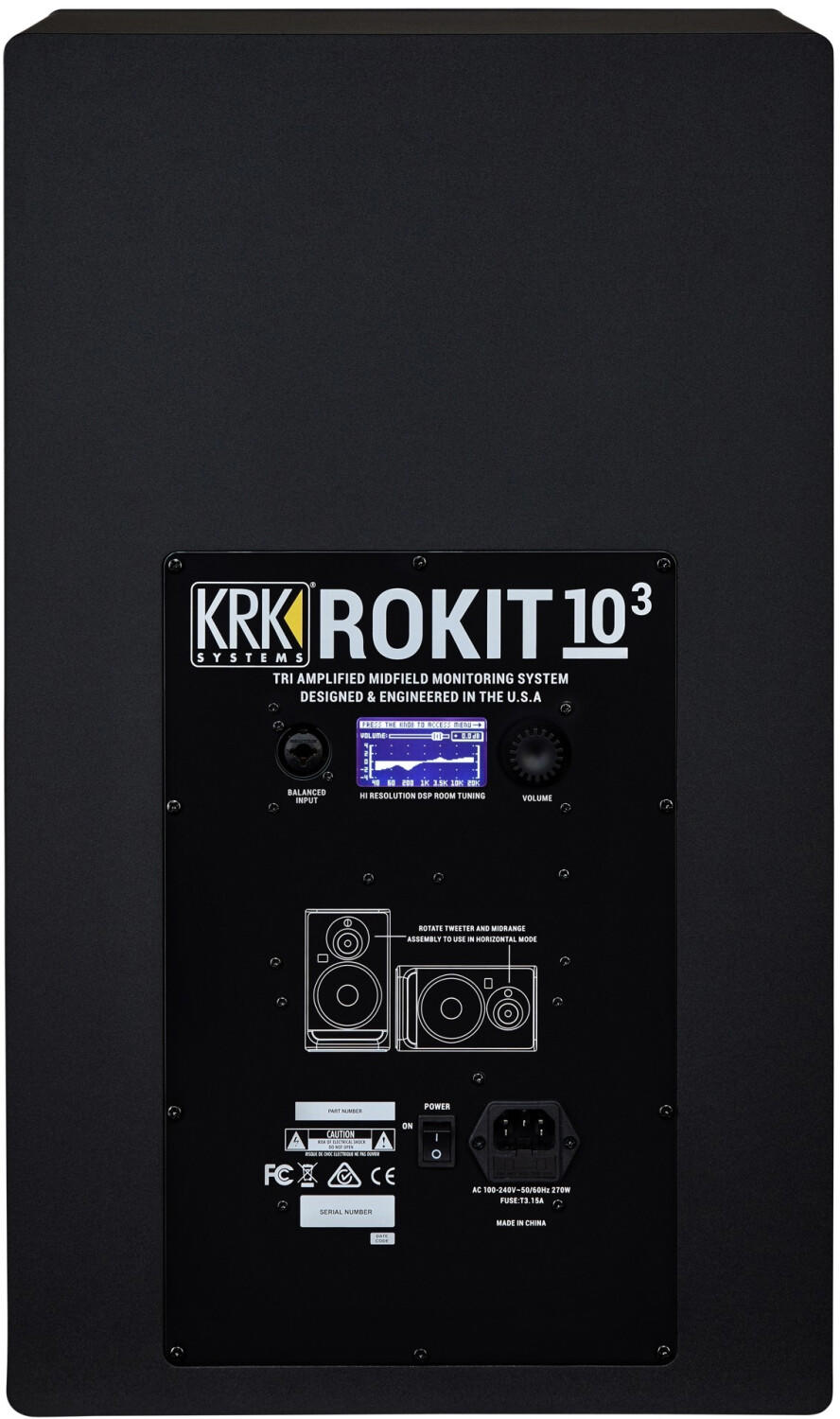


Near-field vs. midfield monitoring
Near-field monitoring refers to sitting close to the speakers, typically 3-5 feet away. This allows for accurate and detailed sound reproduction without much room interference. For near-field monitoring, a popular choice is the Genelec 8030C, a compact and versatile studio monitor with a frequency response of 47Hz - 25kHz. Another option is the Yamaha HS8, known for its clarity and flat response, offering a frequency range of 38Hz - 30kHz.
Midfield monitoring, on the other hand, involves a listening position further away from the speakers, around 6-10 feet or more. This distance offers a better representation of how the mix will sound in a larger listening environment. Ideal for bigger studios or control rooms, the Neumann KH 310 A provides precise sound reproduction with a frequency response of 34Hz - 21kHz. Another popular choice is the Adam Audio S3H, delivering a wide dynamic range and immaculate imaging, with a frequency range of 32Hz - 50kHz.



Considering whether to opt for near-field or midfield monitoring is crucial based on the listening distance and environment requirements of the studio. Several products are available in each category, catering to different studio sizes and preferences.
Compatibility with room size
To ensure accurate sound reproduction, it is crucial that the speakers have the correct frequency response and dispersion, suitable for the dimensions of your space. A larger room may require larger monitors with a wider frequency range and better dispersion capabilities. On the other hand, a smaller room may benefit from compact but powerful monitors.
In terms of compact studio monitors, one viable option is the KRK Rokit 5 G4. With a low-frequency extension down to 43Hz and a powerful Class D amplifier, these monitors deliver a balanced and accurate sound in smaller studios. Another noteworthy compact option is the Genelec 8010A. Despite its small size, it offers a frequency response from 67Hz to 25kHz and an award-winning design, making it ideal for home studios or smaller monitoring environments.
For medium-sized rooms, the Adam Audio A7X can prove to be an excellent choice. These nearfield monitors feature ADAM's proprietary X-ART tweeter for extended highs and a frequency response from 42Hz to 50kHz. Their exceptional transient response and wide sweet spot make them suitable for professional mixing, while their compact size keeps them versatile for various room configurations.
Lastly, if you have a larger room that demands larger monitors, the Genelec 8351B SAM speakers represent a high-end option. These three-way coaxial monitors utilize cutting-edge Smart Active Monitoring (SAM) technology, ensuring precise room response and comprehensive control over the speaker settings. With a frequency response of 32Hz to 40kHz and remarkable imaging capabilities, the 8351Bs perform flawlessly in larger studios where accuracy is paramount.

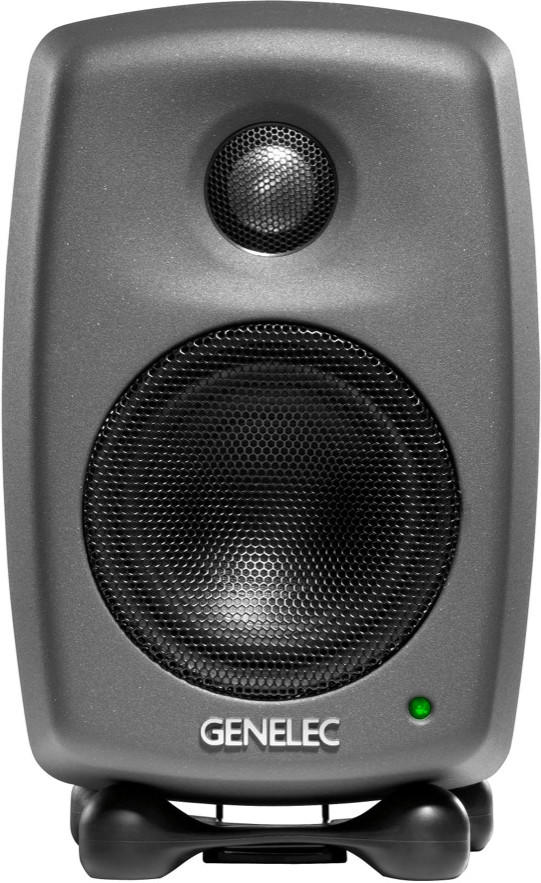
Remember, selecting monitors that are appropriate for your room size is crucial in accurately reproducing and monitoring your audio.
SPL (Sound Pressure Level) handling
SPL refers to the maximum volume level that the monitors can handle without distortion or damage. It is crucial for sound engineers and musicians who want the ability to mix and produce music at high volume levels.
Some studio monitors that excel in SPL handling include the Yamaha HS8, which features 120 watts of bi-amplified power and a frequency range of 38Hz - 30kHz. Another option is the KRK Rokit RP7 G4, with a 100-watt class D amplifier and a frequency response of 44Hz - 40kHz. Both of these monitors are capable of producing high volume levels without compromising sound quality, making them ideal for professional studios or anyone who values accurate monitoring even at louder volumes.




Other groups or segments of studio monitors with varying SPL capabilities include entry-level options like the PreSonus Eris E3.5 and mid-range monitors such as the Adam Audio A7X. For larger studios and those in need of even higher SPL handling, premium products like the KRK Exposé E8B are recommended, which boast 229 watts of class A/B amplification and a frequency range of 45Hz - 22kHz.
Versatility for different genres and applications
It refers to the ability of the monitors to produce accurate and consistent sound across a wide range of genres and applications.
In the affordable segment, the Presonus Eris E4.5-4.5 studio monitors provide excellent versatility. With a frequency response of 70Hz - 20kHz, they offer a balanced and accurate sound reproduction. Ideal for smaller studios, these monitors deliver clear and detailed audio across various genres, including rock, hip-hop, and acoustic.
Moving up to the mid-range segment, the KRK Rokit RP7 G4 studio monitors showcase remarkable versatility. Featuring a frequency response of 42Hz - 40kHz, they offer extended low-end and high-frequency clarity. Thanks to their room adjustment controls, these monitors can be tailored to fit different studio environments, making them suitable for mixing, mastering, and producing music across various genres, from EDM to classical.

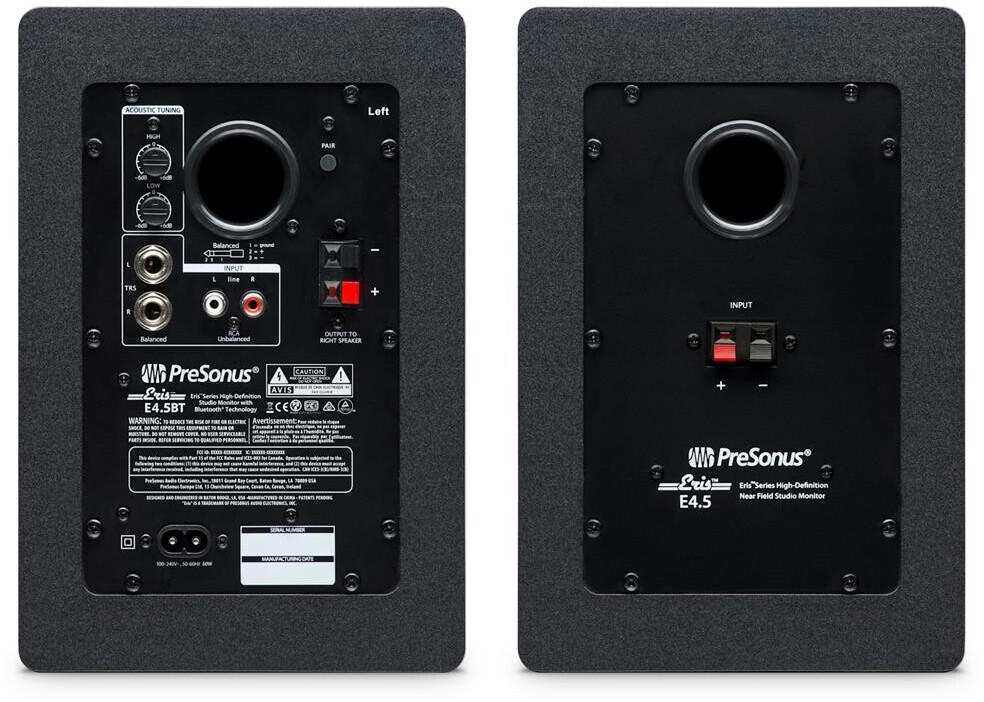


In the professional segment, the Genelec 8351B SAM studio monitors stand out for their exceptional versatility and accuracy. Equipped with genelec's revolutionary Smart Active Monitoring (SAM) technology, these monitors adapt their performance to the acoustic characteristics of the environment. With an impressive frequency response of 32Hz - 40kHz, they deliver unparalleled audio quality, suitable for critical listening across a wide range of applications, such as film sound design, music production, and post-production.
Isolation features (to reduce vibrations)
Isolation features help reduce vibrations and unwanted resonances, ensuring that you hear the most accurate and precise sound reproduction. The market offers a range of studio monitors with different levels of isolation.
In the entry-level segment, the Presonus Eris E3.5 stand out with their integrated acoustic tuning controls, allowing you to optimize the monitors to your room's acoustics. These monitors also come with an excellent rear-facing port design, reducing bass distortion and providing better overall sound clarity.
Moving up to the mid-range segment, the Yamaha HS7 offers a precise sound image with a neutral frequency response. Equipped with room control and high trim response controls, you can fine-tune the monitors based on your workspace. With front-firing bass reflex ports and durable MDF enclosures, these monitors effectively minimize resonance and ensure accurate sound reproduction.
In the higher-end segment, the Adam Audio A7X features an innovative X-ART tweeter design, providing crystal clear highs and detailed midrange reproduction. Coupled with dual bass ports and a unique tweeter waveguide, these monitors deliver accurate sound separation and minimal distortion. Furthermore, they offer adjustable fine-tuning options, including ±4 dB input gain control and high shelving EQ.
Choosing studio monitors with excellent isolation features, such as the Presonus Eris E3.5, Yamaha HS7, and Adam Audio A7X, will help ensure an accurate and transparent listening experience free from undesirable vibrations.
Subwoofer support
If you require enhanced low-frequency response and a more accurate representation of bass-heavy audio content, then opting for monitors with subwoofer support is crucial. One such example is the Yamaha HS8S Studio Subwoofer, which features an 8" speaker and 150W of power for extended low-end capability. The subwoofer also offers adjustable low-pass filter and phase switches, allowing you to customize the frequency cutoff and align the phase with your main monitors for optimal integration.
Another option is the KRK Rokit 10-3 G4 Tri-Amped Studio Monitor, which combines a 10" woofer, 4" midrange driver, and 1" tweeter to deliver full frequency range reproduction. Equipped with a 3-way design, this monitor provides wider dispersion and greater detail in the sound. This setup eliminates the need for an additional subwoofer in most cases, making it a suitable choice for those looking for a complete solution in a single monitor.
In the market, studio monitors can be broadly categorized into three groups based on subwoofer support:
- Integrated Subwoofer Monitors: These monitors come with a built-in subwoofer and provide an all-in-one bass solution. Examples include the Mackie HR824 MK2 Studio Monitor with its integrated 12" subwoofer and the aforementioned KRK Rokit 10-3 G4 Tri-Amped Studio Monitor.
- Subwoofer-Ready Monitors: Monitors in this category have the necessary outputs and controls to connect an external subwoofer. The Yamaha HS8S Studio Subwoofer falls into this group, as it is designed to complement the Yamaha HS8 Studio Monitor.
- Mid/High-Range Monitors: Some monitors focus primarily on mid and high-frequency reproduction, working best in conjunction with a separate subwoofer. The
Adam Audio A7X, renowned for its clarity and precision, falls into this group and pairs well with subwoofers like the Adam Audio T10S for improved low-end response.
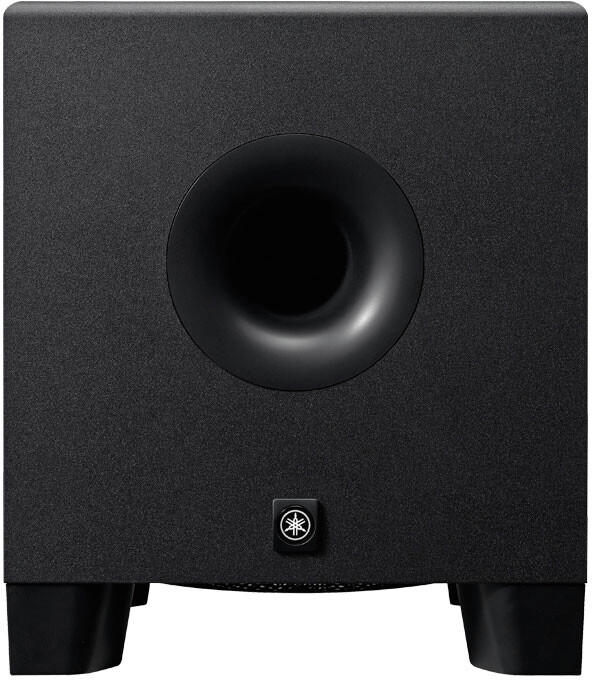

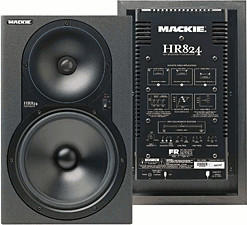
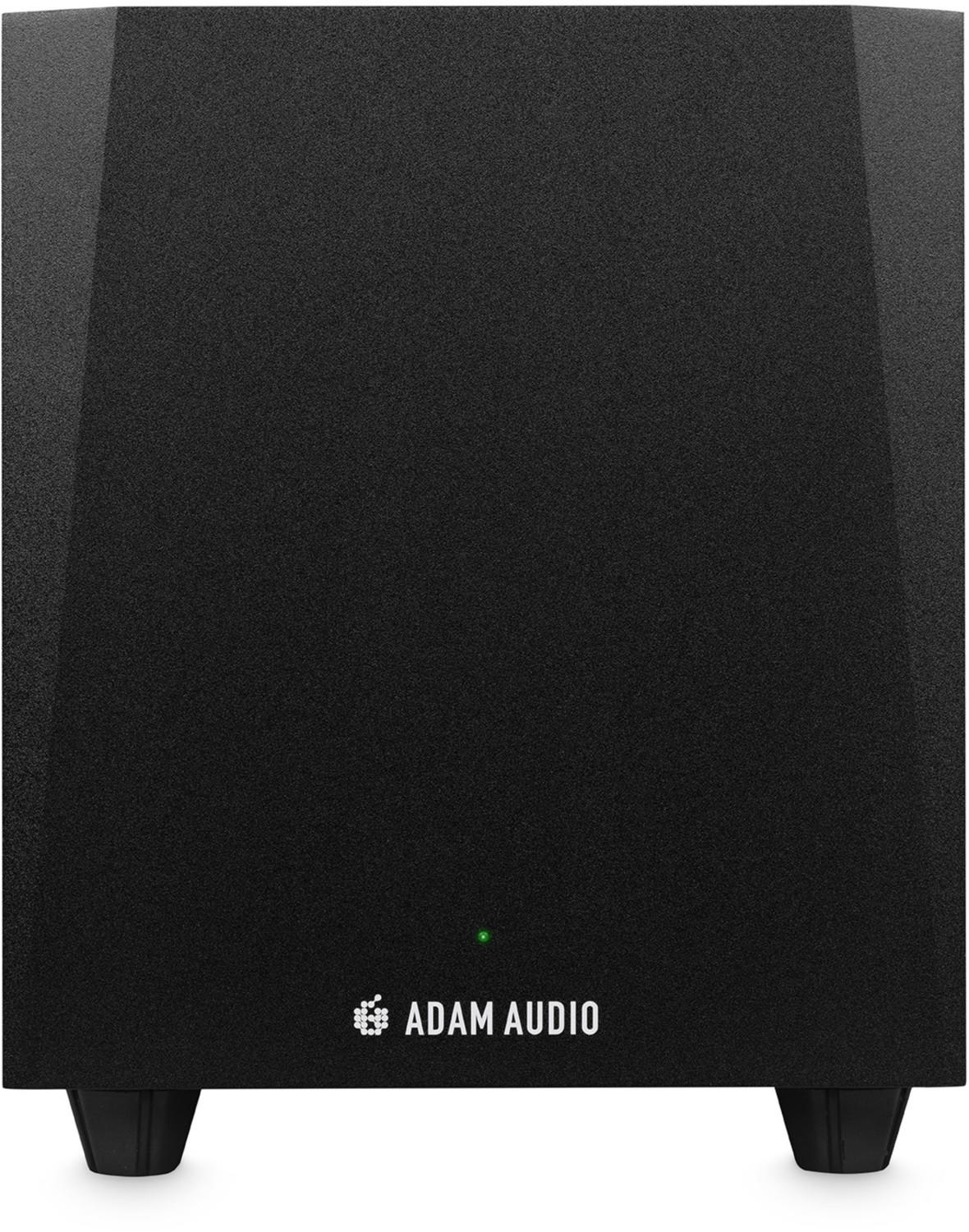
Impedance matching for multiple monitors
For those looking to set up a studio with multiple monitors, here are some options to consider:
KRK Rokit RP5 G4 - These studio monitors offer an 8-ohm impedance rating, making them suitable for smaller studio setups where multiple monitors are needed. They are a budget-friendly option that provides clear and accurate sound reproduction.
Adam Audio A7X - If you have a larger studio setup, the Adam Audio A7X monitors with a 4-ohm impedance are a great choice. Designed for professional use, they deliver detailed and precise audio, making them excellent for critical listening and mixing tasks.
Focal Twin6 Be - For those looking for premium studio monitors, the Focal Twin6 Be is a compelling option. With an impedance rating of 4 ohms, these monitors offer exceptional stereo imaging and a neutral sound reproduction, ensuring accurate monitoring and mixing capabilities in high-end professional studios.
Price
It is important to strike a balance between performance and budget. There are several options available in the market that cater to varying price ranges. In the entry-level segment, one popular option is the 'KRK Rokit RP5 G4' which offers exceptional sound quality and frequency response within a reasonable price range. Moving up the price ladder, the 'Yamaha HS8' is a popular choice among professionals, known for its accurate sound reproduction and high-performance transducers. In the premium segment, the 'ADAM Audio A7X' stands out with its precise imaging and extended frequency range, making it perfect for critical listening environments. Consider your specific requirements and budget before making a choice, as different price points offer different levels of quality and features.




Variety of brands
Each brand brings its own strengths and weaknesses to the table. Some popular studio monitor brands include Yamaha, KRK, JBL, Adam Audio, and Genelec.
Yamaha is known for its reliable and affordable studio monitors. Their HS Series, such as the Yamaha HS5 and Yamaha HS8, boast a neutral and balanced sound, making them suitable for recording, mixing, and mastering. KRK, on the other hand, is renowned for its energetic and vibrant sound signature. The Rokit series is a popular model lineup, with options like the KRK Rokit 5 G4 and KRK Rokit 7 G4. JBL studio monitors offer a combination of accuracy and clarity, perfect for a range of audio applications. Their 3 Series MkII speakers, including the JBL 305P MkII and JBL 308P MkII, offer accurate imaging and a wide sweet spot.
Adam Audio is known for its high-quality studio monitors with impressive transient response and extended frequency ranges. The Adam Audio A7X and Adam Audio S3H are notable models that deliver precision and transparency. Finally, Genelec is a brand that is highly regarded in professional studios for their detailed and accurate sound reproduction. Products like the Genelec 8030C and Genelec 8351 offer exceptional imaging and controlled directivity.





While each brand has its own sonic characteristics and target audience, it's important to also consider other factors such as room acoustics, power requirements, size, and budget, to ensure that you find the best studio monitors that fit your needs.